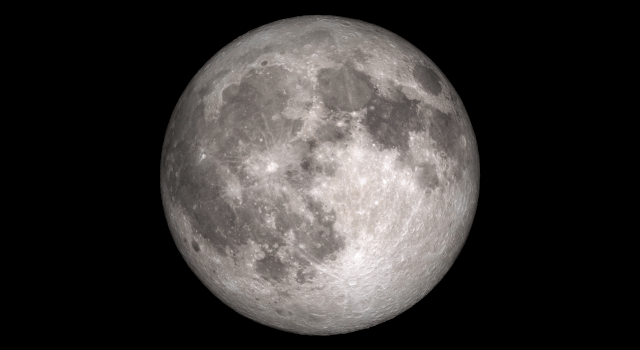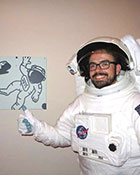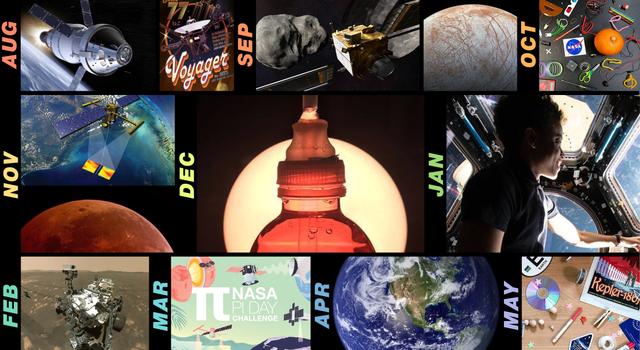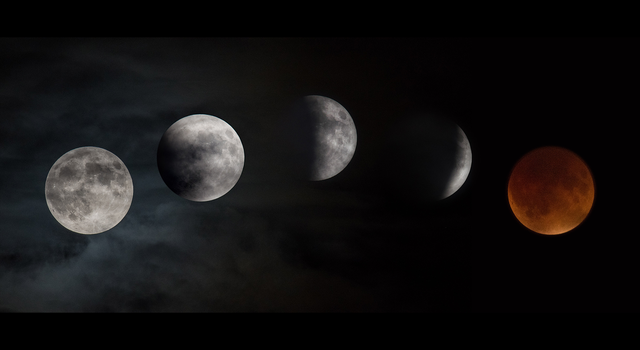Teachable Moments | October 4, 2022
How to Watch a Total Lunar Eclipse and Get Students Observing the Moon
There’s no better time to learn about the Moon than during a lunar eclipse. Here’s how eclipses work, what to expect, and how to get students engaged.
This article has been updated to include information about the visibility and timing of the total lunar eclipse on Nov. 8, 2022. See What to Expect for details.
A full moon is always a good reason to go outside and look up, but a total or partial lunar eclipse is an awe-inspiring site that gives students a great opportunity to engage in practical sky watching. Whether it’s the Moon's reddish hue during a total lunar eclipse or the "bite" taken out of the Moon during a partial lunar eclipse, there's always something exciting to observe during these celestial events.
Read on to see what to expect during the next lunar eclipse. Plus, explore resources you can use at home or in the classroom to teach students about moon phases, craters, and more!
How It Works

These side-by-side graphics show how the Moon, Sun, and Earth align during a lunar eclipse (left) versus a non-eclipse full moon (right). Credit: NASA Goddard Visualization Studio | + Enlarge image
Eclipses can occur when the Sun, the Moon and Earth align. Lunar eclipses can only happen during the full moon phase, when the Moon and the Sun are on opposite sides of Earth. At that point, the Moon could move into the shadow cast by Earth, resulting in a lunar eclipse. However, most of the time, the Moon’s slightly tilted orbit brings it above or below the shadow of Earth.
The time period when the Moon, Earth and the Sun are lined up and on the same plane – allowing for the Moon to pass through Earth’s shadow – is called an eclipse season. Eclipse seasons last about 34 days and occur just shy of every six months. When a full moon occurs during an eclipse season, the Moon travels through Earth’s shadow, creating a lunar eclipse.
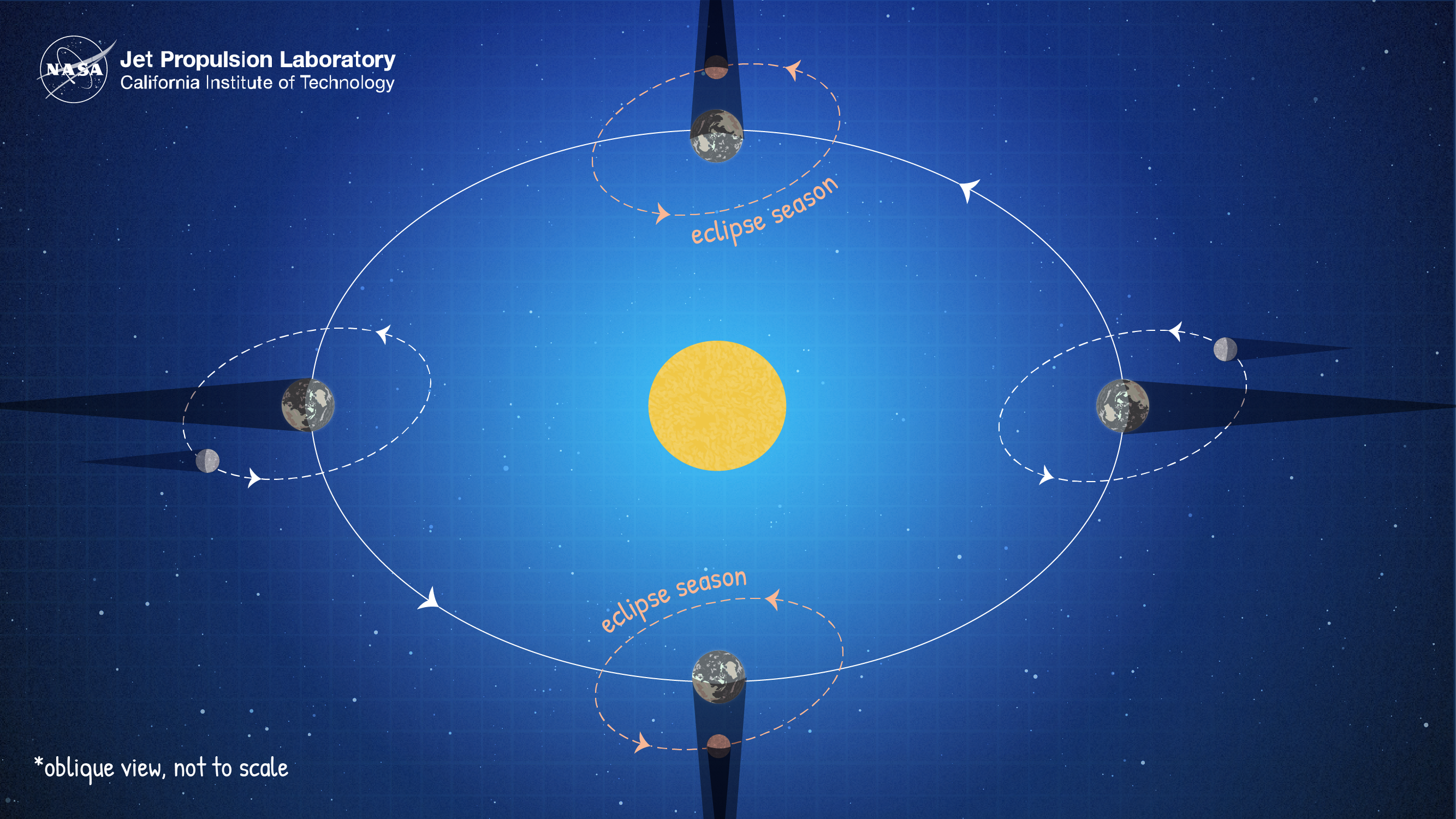
When a full moon occurs during an eclipse season, the Moon travels through Earth's shadow, creating a lunar eclipse. Credit: NASA/JPL-Caltech | + Enlarge image
Unlike solar eclipses, which require special glasses to view and can only be seen for a few short minutes in a very limited area, a total lunar eclipse can last over an hour and be seen by anyone on the nighttime side of Earth – as long as skies are clear!
Why It’s Important
Lunar eclipses have long played an important role in understanding Earth and its motions in space.
In ancient Greece, Aristotle noted that the shadows on the Moon during lunar eclipses were round, regardless of where an observer saw them. He realized that only if Earth were a spheroid would its shadows be round – a revelation that he and others had many centuries before the first ships sailed around the world.
Earth wobbles on its axis like a spinning top that’s about to fall over, a phenomenon called precession. Earth completes one wobble, or precession cycle, over the course of 26,000 years. Greek astronomer Hipparchus made this discovery by comparing the position of stars relative to the Sun during a lunar eclipse to those recorded hundreds of years earlier. A lunar eclipse allowed him to see the stars and know exactly where the Sun was for comparison – directly opposite the Moon. If Earth didn’t wobble, the stars would appear to be in the same place they were hundreds of years earlier. When Hipparchus saw that the stars’ positions had indeed moved, he knew that Earth must wobble on its axis!
Additionally, modern-day astronomers have used ancient eclipse records and compared them with computer simulations. These comparisons helped scientists determine the rate at which Earth’s rotation is slowing.
What to Expect
The Moon passes through two distinct parts of Earth’s shadow during a lunar eclipse. The outer part of the cone-shaped shadow is called the penumbra. The penumbra is less dark than the inner part of the shadow because it’s penetrated by some sunlight. (You have probably noticed that some shadows on the ground are darker than others, depending on how much outside light enters the shadow; the same is true for the outer part of Earth’s shadow). The inner part of the shadow, known as the umbra, is much darker because Earth blocks additional sunlight from entering the umbra.
Here's what to expect during the total lunar eclipse on Nov. 8, 2022, which will be visible in North and South America, as well as Asia and Australia. Viewers in the most eastern parts of the continental U.S. will see the Moon set below the horizon as it exits Earth’s shadow in the second half of the eclipse.
At 12:02 a.m. PST (3:02 a.m. EST), the edge of the Moon will begin entering the penumbra. The Moon will dim very slightly for the next 67 minutes as it moves deeper into the penumbra. Because this part of Earth’s shadow is not fully dark, you may only notice some dim shading (if anything at all) on the Moon near the end of this part of the eclipse. Should you decide to skip this part of the eclipse, you won’t miss much.

During a total lunar eclipse, the Moon first enters into the penumbra, or the outer part of Earth's shadow, where the shadow is still penetrated by some sunlight. Credit: NASA | + Enlarge image
At 1:09 a.m. PST (4:09 a.m. EST), the edge of the Moon will begin entering the umbra. As the Moon moves into the darker shadow, significant darkening will be noticeable. Some say that during this part of the eclipse, the Moon looks as if it has had a bite taken out of it. That “bite” gets bigger and bigger as the Moon moves deeper into the shadow.
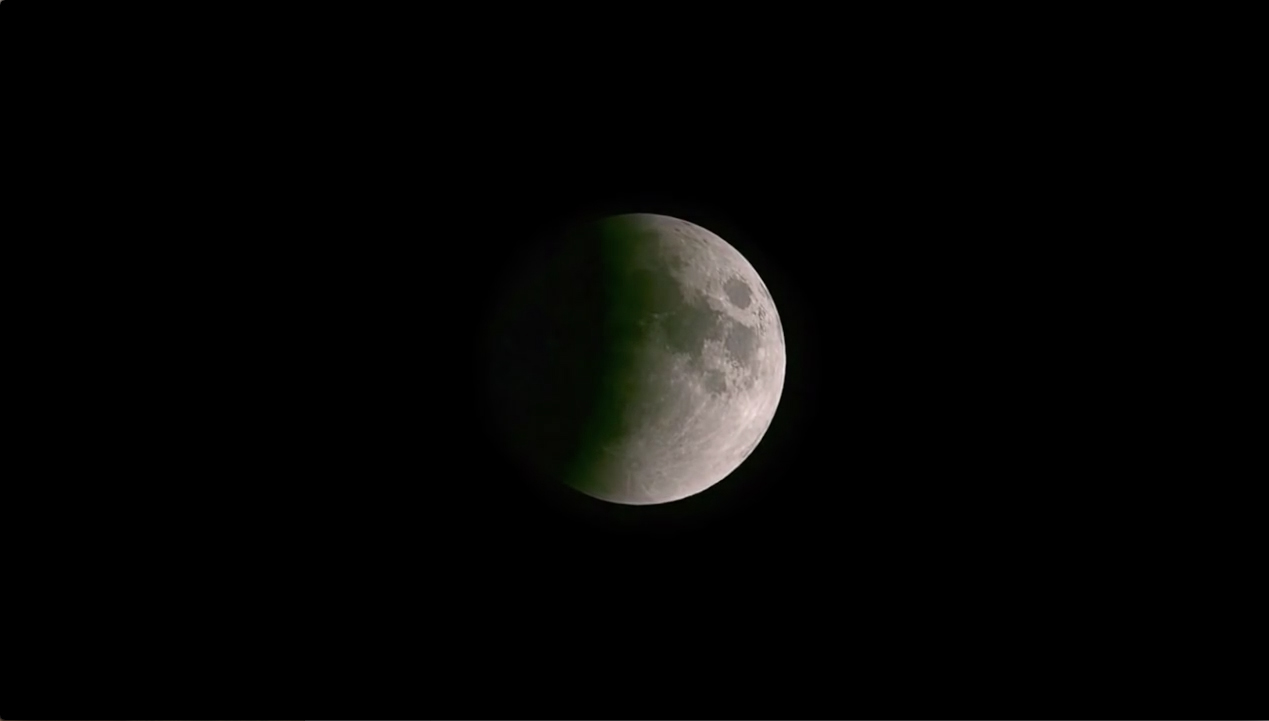
As the Moon starts to enter into the umbra, the inner and darker part of Earth's shadow, it appears as if a bite has been taken out of the Moon. This "bite" will grow until the Moon has entered fully into the umbra. Credit: NASA | + Enlarge image
At 2:16 a.m. PST (5:16 a.m. EST), the Moon will be completely inside the umbra, marking the beginning of the total lunar eclipse, also known as totality.
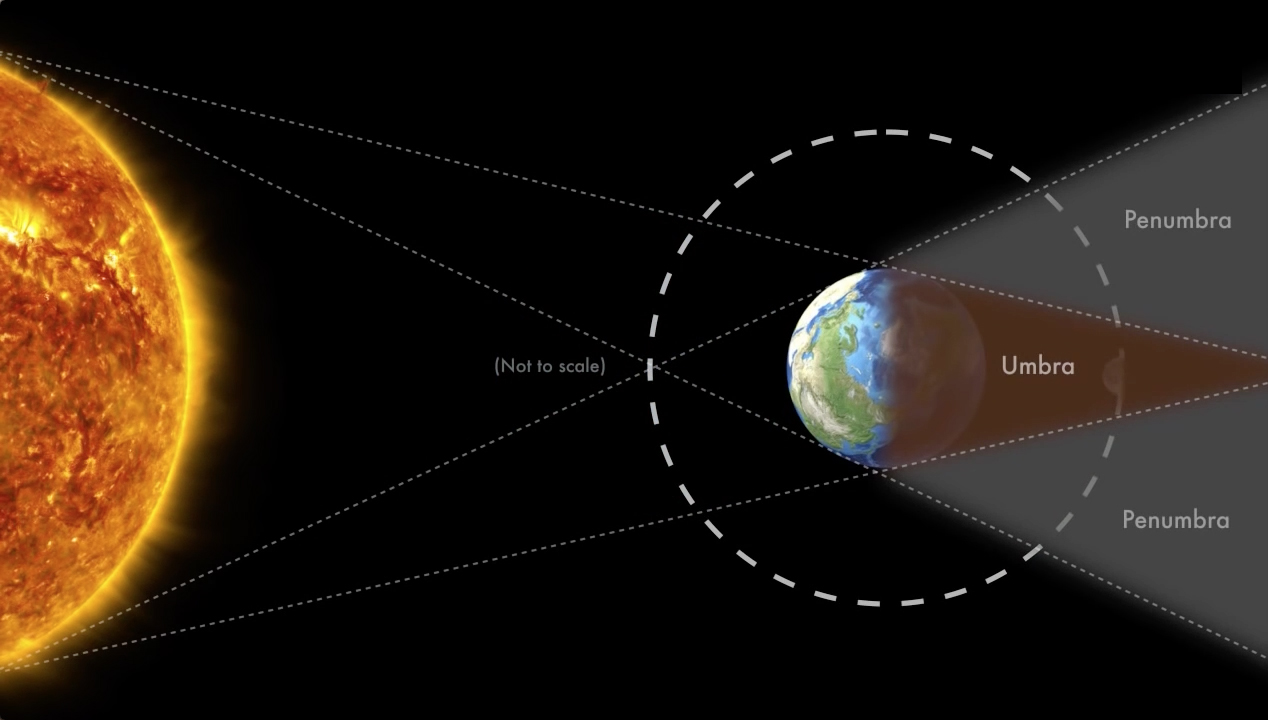
The total lunar eclipse starts once the moon is completely inside the umbra. And the moment of greatest eclipse happens with the Moon is halfway through the umbra as shown in this graphic. Credit: NASA | + Enlarge image
The moment of greatest eclipse, when the Moon is halfway through its path across the umbra, occurs at 2:59 a.m. PST (5:59 a.m. EST). As the Moon moves completely into the umbra – the part of the eclipse known as totality – something interesting happens: The Moon begins to turn reddish-orange. The reason for this phenomenon? Earth’s atmosphere. As sunlight passes through it, the small molecules that make up our atmosphere scatter blue light, which is why the sky appears blue. This leaves behind mostly red light that bends, or refracts, into Earth’s shadow. We can see the red light during an eclipse as it falls onto the Moon in Earth’s shadow. This same effect is what gives sunrises and sunsets a reddish-orange color.
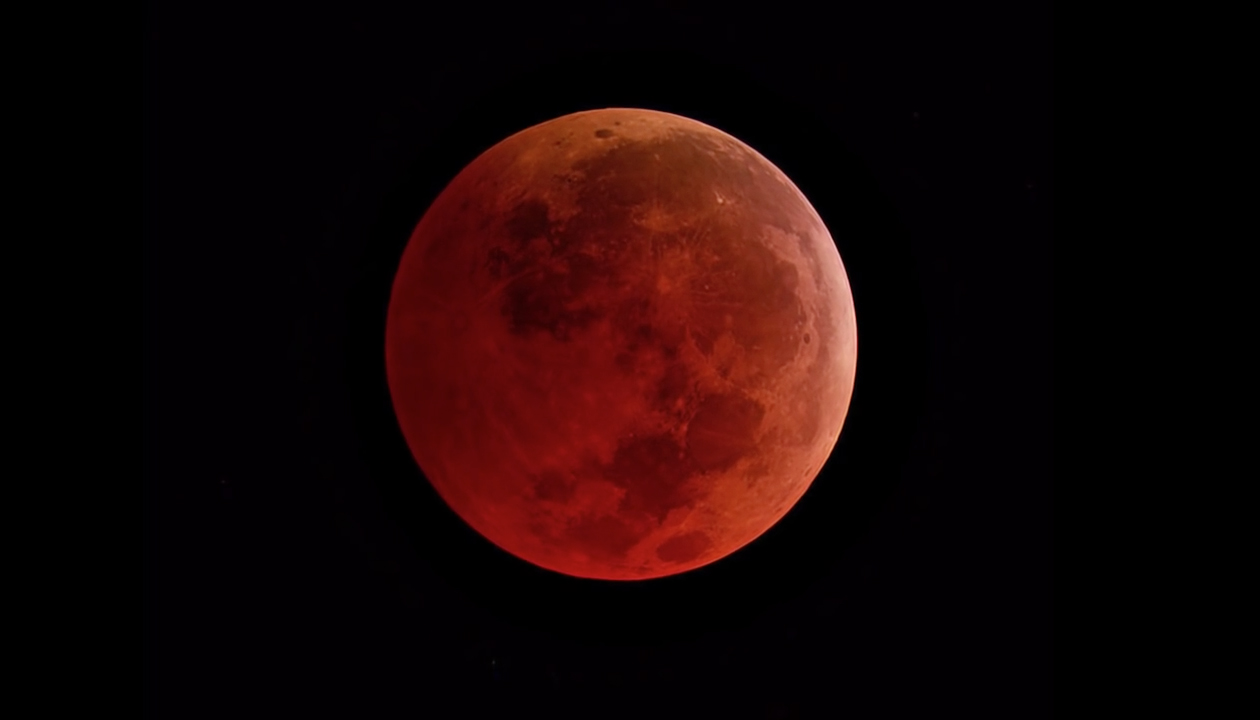
As the Moon moves completely into the umbra, it turns a reddish-orange color. Credit: NASA | + Enlarge image
A variety of factors affect the appearance of the Moon during a total lunar eclipse. Clouds, dust, ash, photochemical droplets and organic material in the atmosphere can change how much light is refracted into the umbra. The potential for variation provides a great opportunity for students to observe and classify the lunar eclipse based on its brightness. Details can be found below in the Teach It section.
At 3:41 a.m. PST (6:41 a.m. EST), the edge of the Moon will begin exiting the umbra and moving into the opposite side of the penumbra, reversing the “bite” pattern seen earlier. At this point, the Moon will have just set in the most northeastern portions of the continental United States. More and more eastern states will see the Moon set over the next hour as the eclipse progresses.
At 4:49 a.m. PST, the Moon will be completely outside of the umbra and no longer visible in the eastern United States. Those in the central United States will see the Moon begin setting around this time (6:49 a.m. CST). The Moon will continue exiting the penumbra until the eclipse officially ends at 5:56 a.m. PST, remaining visible only to viewers in the western United States, including many in the Mountain Time Zone one hour ahead.
Teach It
Ask students to observe the lunar eclipse and evaluate the Moon’s brightness using the Danjon Scale of Lunar Eclipse Brightness. The Danjon scale illustrates the range of colors and brightness the Moon can take on during a total lunar eclipse and is a tool observers can use to characterize the appearance of an eclipse. View the lesson guide here. After the eclipse, have students compare and justify their evaluations of the eclipse.
Use these standards-aligned lessons and related activities to get your students excited about the eclipse, moon phases, and Moon observations.
Educator Guides & Resources
-
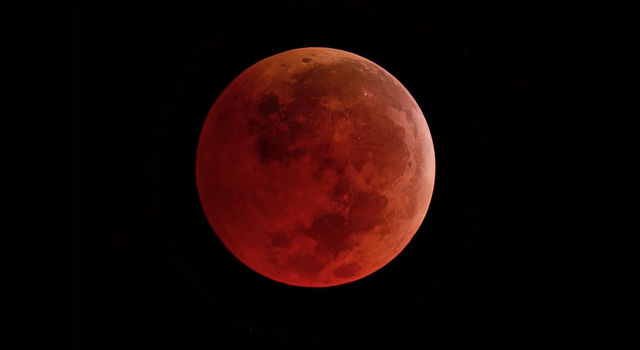
Evaluating a Lunar Eclipse
Students use the Danjon Scale of Lunar Eclipse Brightness to illustrate the range of colors and brightness the Moon can take on during a total lunar eclipse.
Grades 3-12
Time 30 mins - 1 hr
-
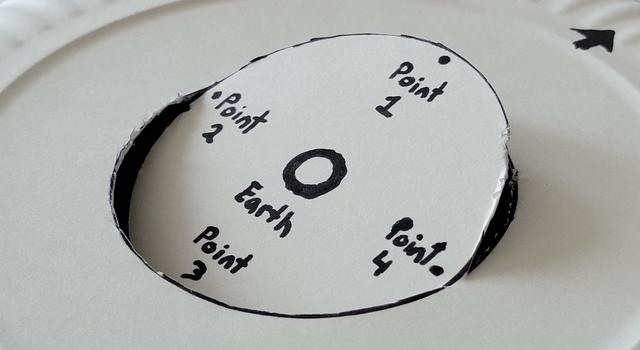
When Do Lunar Eclipses Happen?
Students use a paper plate to make a model that explains why lunar eclipses don’t occur during every full moon.
Grades 4-8
Time Less than 30 mins
-

Observing the Moon
Students identify the Moon’s location in the sky and record their observations over the course of the moon-phase cycle in a journal.
Grades K-6
Time 30 mins - 1 hr
-
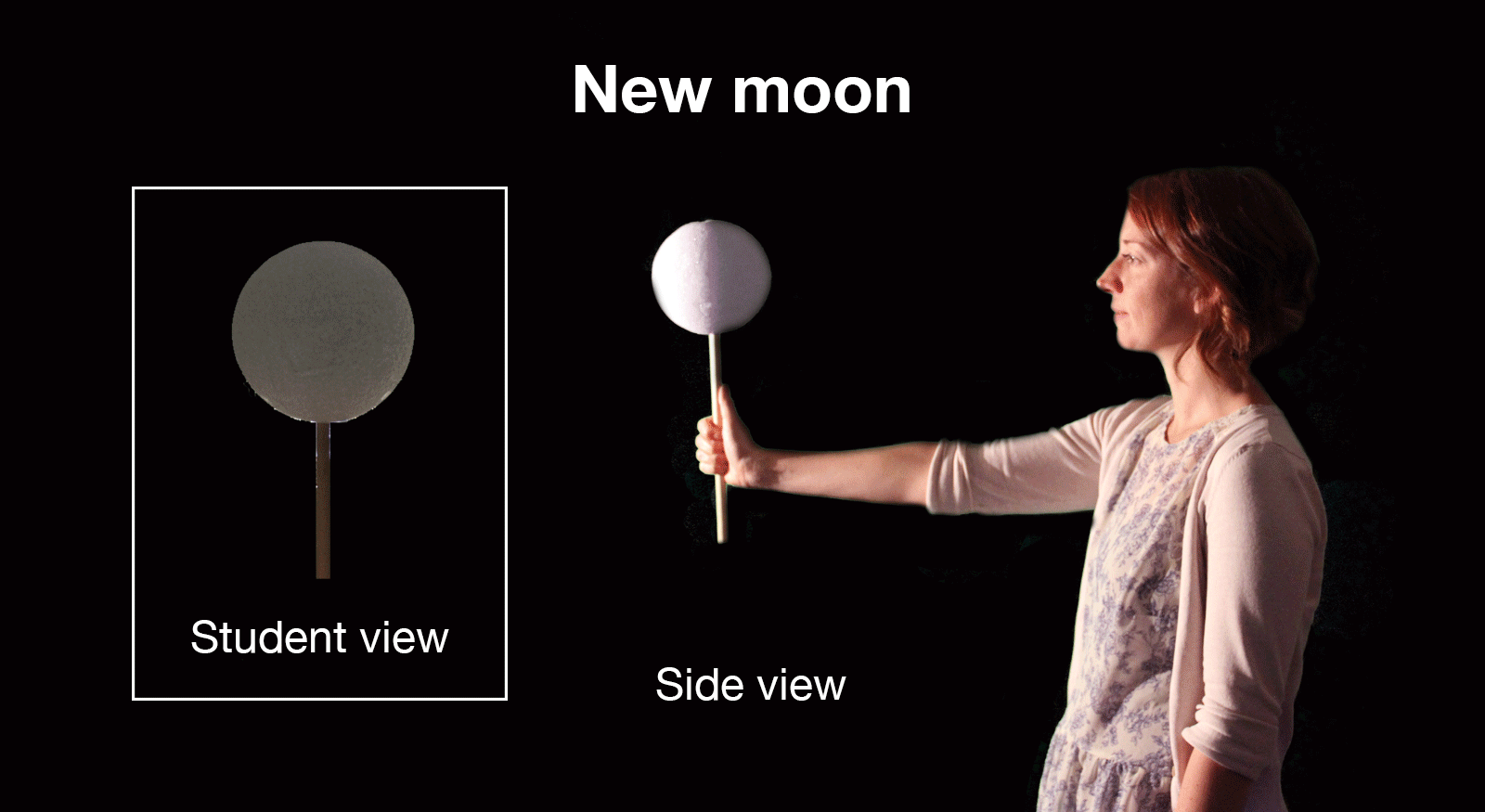
Moon Phases
Students learn about the phases of the moon by acting them out.
Grades 1-6
Time 30 mins - 1 hr
-
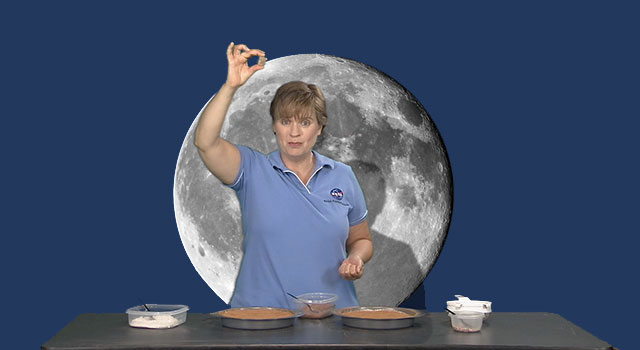
Whip Up a Moon-Like Crater
Whip up a moon-like crater with baking ingredients as a demonstration for students.
Grades 1-6
Time 30 mins - 1 hr
-
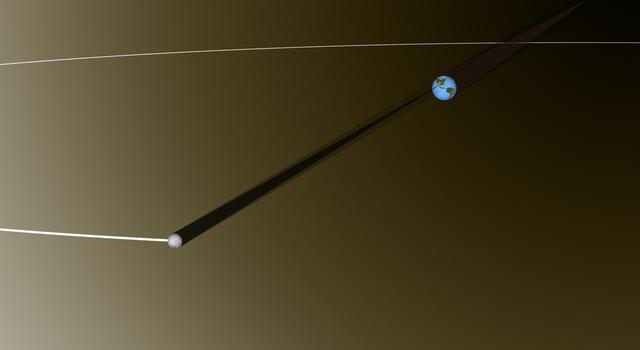
Modeling the Earth-Moon System
Students learn about scale models and distance by creating a classroom-size Earth-Moon system.
Grades 6-8
Time 30 mins - 1 hr
-
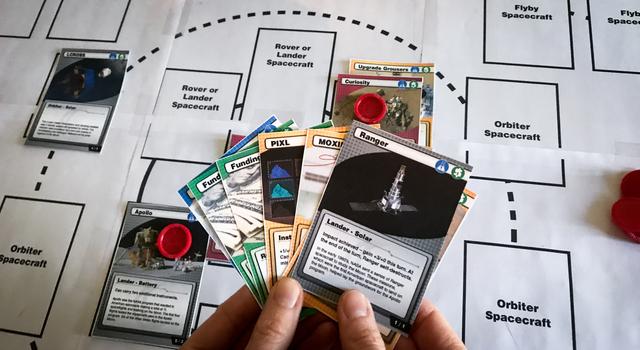
All Moon Lessons for Educators
Teach students all about the Moon with these standards-aligned STEM lessons for educators.
Grades K-12
Time Varies
Student Activities
-

When Do Lunar Eclipses Happen?
Use a paper plate to make a model that explains why lunar eclipses don’t happen as often as you might expect.
-
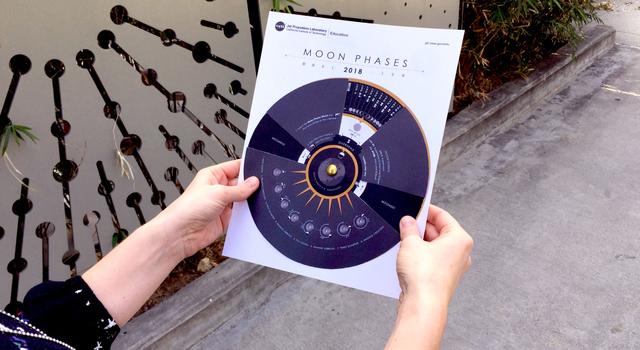
Make a Moon Phases Calendar and Calculator
Like a decoder wheel for the Moon, this calendar will show you where and when to see the Moon and every moon phase throughout the year!
-
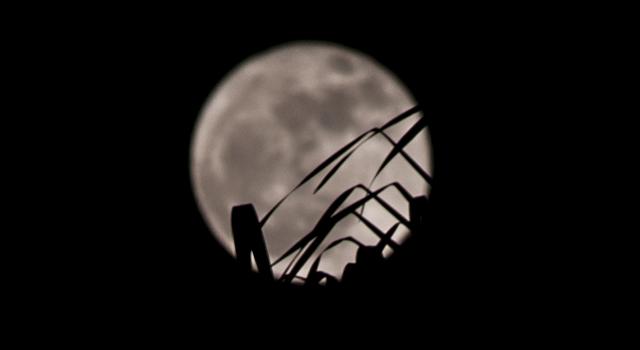
Look at the Moon! Journaling Project
Draw what you see in a Moon Journal and see if you can predict the moon phase that comes next.
-
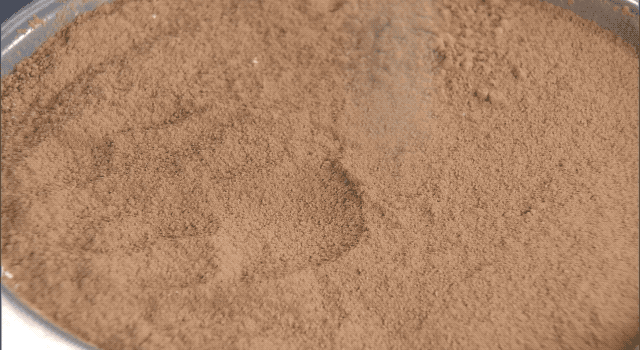
Make a Moon Crater
Make craters like the ones you can see on the Moon using simple baking ingredients!
-

All Moon Activities for Students
Make a moon phases calendar, moon crater, lunar rover and more with these activities all about Earth's moon.
Subjects Varies
Type Varies
Explore More
- Try these related resources for students from NASA's Space Place:
- Article for Kids: Lunar Eclipses and Solar Eclipses
- Article for Kids: Why Does the Moon Have Craters?
- Article for Kids: All About the Moon
- NASA Moon Website – Find out more about the Moon and the NASA robots and humans who have visited it.
TAGS: Lunar Eclipse, Moon, Super Blue Blood Moon, Observe the Moon, Eclipse, K-12, Classroom Activities, Teaching
Edu News | August 24, 2022
A Lesson for Every Day of the School Year
With 180 lessons in our online catalog, you can explore Earth and space with us all year long. We show you how with this handy NASA-JPL school year calendar.
We just added the 180th lesson to our online catalog of standards-aligned STEM lessons, which means JPL Education now has a lesson for every day of the school year. To celebrate and help you make the year ahead stellar, we've put together this monthly calendar of upcoming NASA events along with links to our related lessons, Teachable Moments articles, and student projects you can use to engage students in STEM while they explore Earth and space with us all year long.
August
The Voyagers Turn 45
The twin Voyager spacecraft launched in 1977 on a journey to explore the outer planets and beyond – and they're still going. Now more than 12 billion miles (19 billion kilometers) from Earth in a region known as interstellar space, they're the most distant human-made objects in space.
Get a primer on these fascinating spacecraft from Teachable Moments, then use it as a jumping off point for lessons on the scale, size, and structure of our solar system and how we communicate with distant spacecraft.
Lessons & Resources:
-
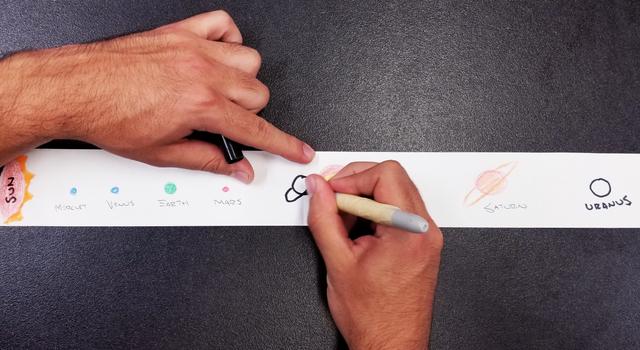 Collection
CollectionVoyager Lessons for Educators
Explore the science behind NASA's Voyager spacecraft with this collection of standards-aligned STEM lessons.
-
 Collection
CollectionVoyager Activities for Students
These DIY projects, slideshows, and videos will get students exploring the science behind NASA's Voyager spacecraft.
-
 Teachable Moments
Teachable MomentsThe Farthest Operating Spacecraft, Voyagers 1 and 2, Still Exploring
The twin spacecraft launched in 1977 on an epic journey through the solar system and beyond offer lessons in what it takes to travel farther than ever before.
-
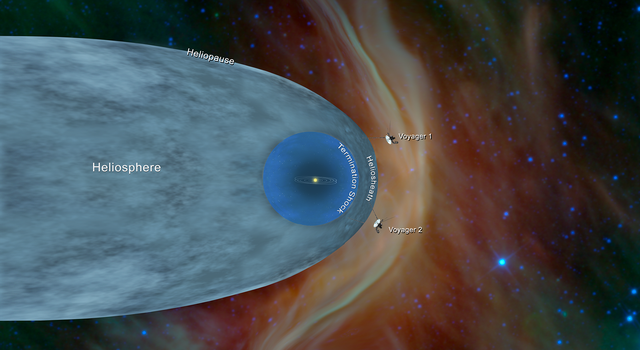 Teachable Moments
Teachable MomentsThen There Were Two: Voyager 2 Reaches Interstellar Space
Find out how the twin Voyager spacecraft took advantage of a rare planetary alignment to embark on a journey no spacecraft had before – or has since.
September
Rendezvous with an Asteroid
A distant asteroid system 6.8 million miles (11 million kilometers) from Earth was the site of NASA's first attempt at redirecting an asteroid. On September 26, the Double Asteroid Redirection Test, or DART, mission impacted the asteroid Dimorphos in an attempt to alter its speed and path around a larger asteroid known as Didymos. Dimorphos and Didymos do not pose a threat to Earth, which makes them a good proving ground for testing whether a similar technique could be used to defend Earth against potential impacts by hazardous asteroids in the future.
Get a primer on the DART mission and find related resources for the classroom in this article from our Teachable Moments series. Plus, explore our collection of standards-aligned lessons and activities all about asteroids to get students learning about different kinds of space rocks, geology, and meteoroid math.
Lessons & Resources:
-
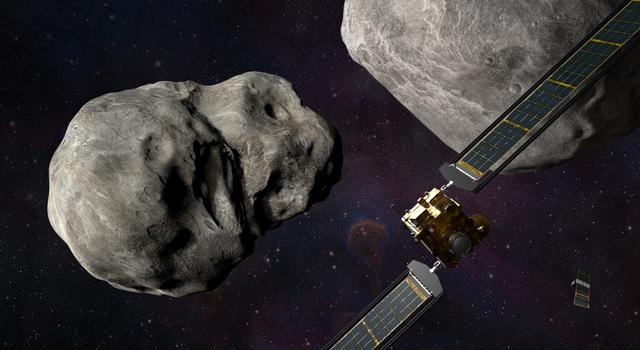 Teachable Moments
Teachable MomentsThe Science Behind NASA's First Attempt at Redirecting an Asteroid
Find out more about the historic first test, which could be used to defend our planet if a hazardous asteroid were discovered. Plus, explore lessons to bring the science and engineering of the mission into the classroom.
-
 Collection
CollectionAsteroids Lessons for Educators
Explore a collection of standards-aligned lessons all about asteroids and craters.
-
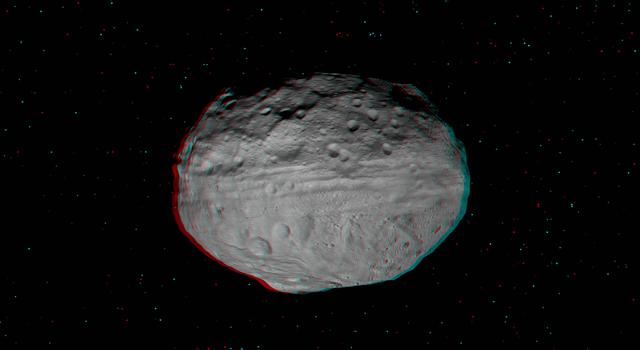 Collection
CollectionAsteroids Actvities for Students
Explore projects, videos, slideshows, and games for students all about asteroids.
A Closer Look at Europa
Just a few days later, on September 29, the Juno spacecraft that had been orbiting Jupiter since 2016 captured the closest views of Jupiter’s moon Europa in more than 20 years. The ice-covered moon is thought to contain a subsurface liquid-water ocean, making it an exciting new frontier in our search for life beyond Earth. NASA's Europa Clipper mission, which is scheduled to launch in 2024 is designed to study the moon in more detail. But until Europa Clipper arrives at the Jovian system in 2030, these observations from Juno are our best chance to get a closer look at this fascinating moon.
Learn more about Europa and why it is interesting to scientists in this talk from our Teaching Space With NASA series featuring a Europa Clipper mission scientist. Then, explore our Ocean Worlds Lesson Collection for ideas on making classroom connections.
Lessons & Resources:
-
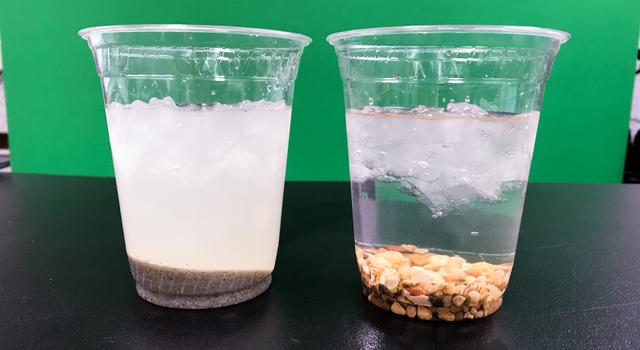 Collection
CollectionOcean Worlds Lessons for Educators
Explore a collection of standards-aligned STEM lessons all about ocean worlds throughout our solar system.
-
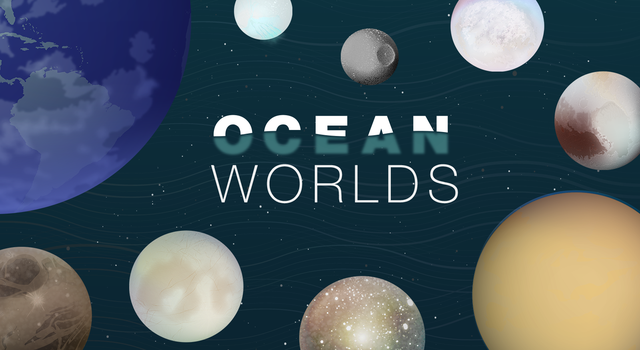 Collection
CollectionOcean Worlds Actvities for Students
Learn about the ocean worlds throughout our solar system with these science and engineering activities for students.
-
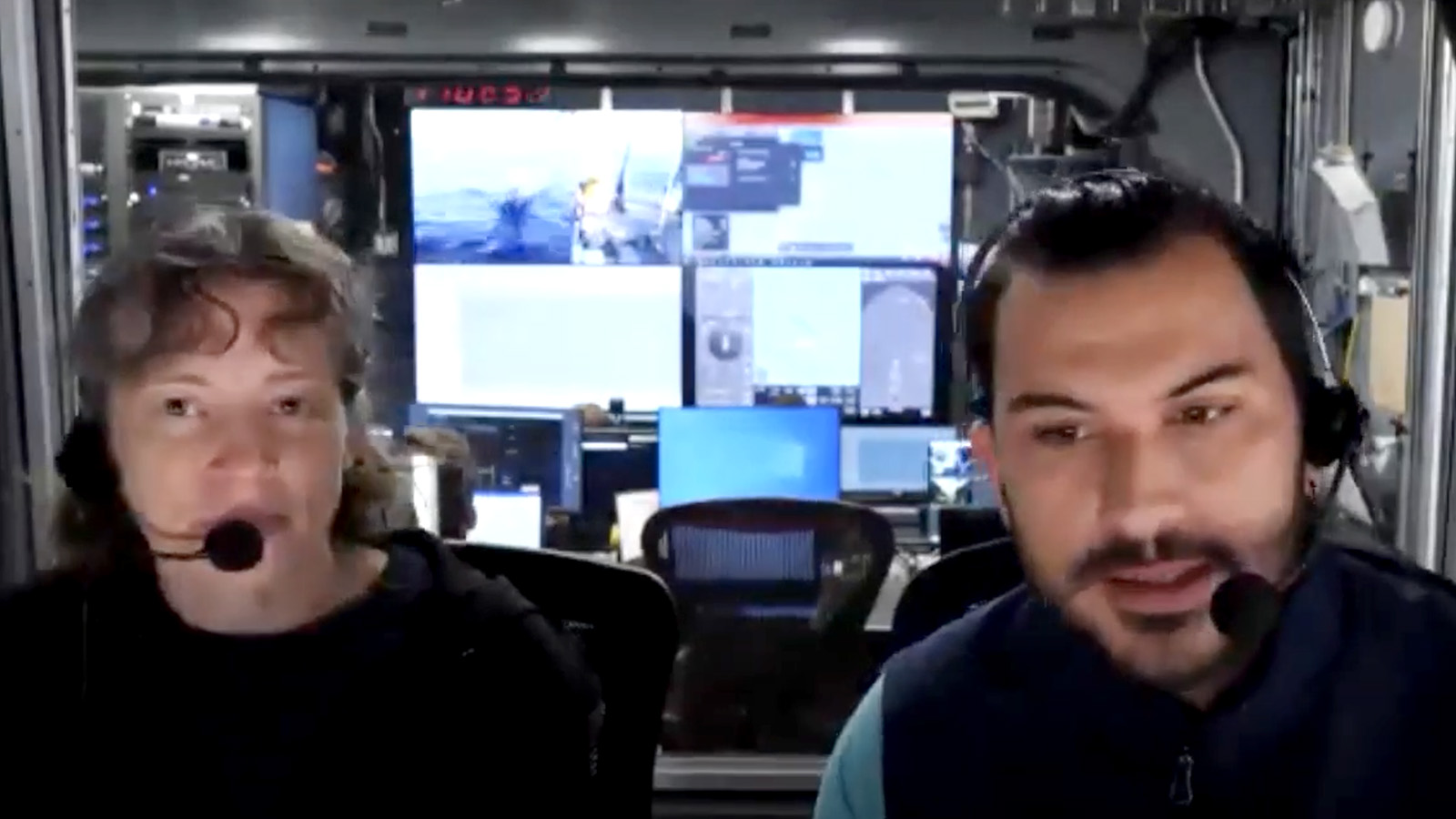 Expert Talk
Expert TalkTeaching Space With NASA – Robotic Oceanographers
Hear from scientists exploring Earth's oceans and learn about how we use robotic explorers to collect data on how our oceans are changing as well as explore ocean worlds beyond Earth.
October
Celebrate Halloween Like a Space Explorer
The month of October is the perfect time to get students exploring our STEM activities with a Halloween twist. Students can learn how to carve a pumpkin like a JPL engineer, take a tour of mysterious locations throughout the solar system, and dig into the geology inside their Halloween candy.
October 31 is also JPL's 86th birthday, which makes October a great time to learn more about JPL history, including the team of female mathematicians known as "human computers" who performed some of the earliest spacecraft-tracking calculations and the Laboratory's role in launching the first U.S. space satellite.
Lessons & Resources:
-
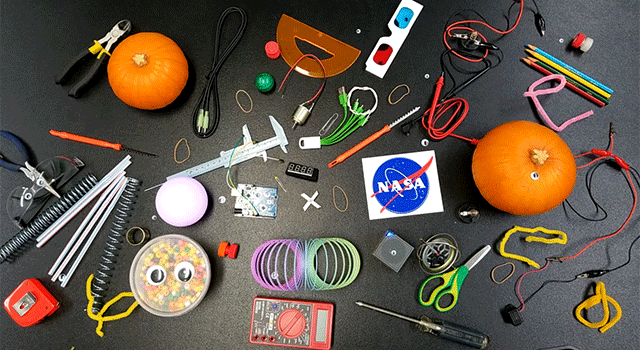 Collection
CollectionHalloween Actvities for Students
Explore student projects and slideshows that put a Halloween twist on STEM.
-
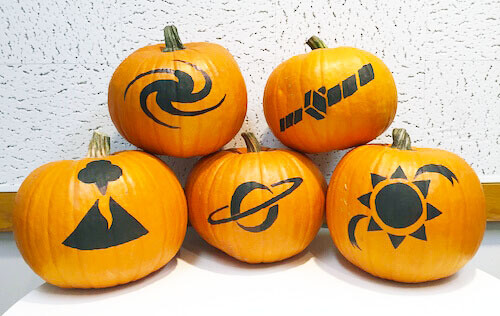 Project for Kids
Project for KidsPumpkin Stencils
Celebrate the fall season and Halloween by making your very own space-themed pumpkins with these easy-to-use stencils from NASA's Space Place!
-
 Teachable Moments
Teachable MomentsWhen Computers Were Human
Learn about the important but little-known role women played in the early days of space exploration, then try a math lesson inspired by their work.
-
 Teachable Moments
Teachable MomentsExplorer 1 Anniversary Marks 60 Years of Science in Space
The fascinating history of America’s first space satellite serves as a launching point for lessons in engineering design, motion and flight, and Earth science.
November
Watch a Total Lunar Eclipse
Look up in the early morning hours of November 8 to watch one of the most stunning spectacles visible from Earth: a total lunar eclipse. This one will be viewable in North and South America, as well as Asia and Australia.
Learn more about lunar eclipses and how to watch them from our Teachable Moments series. Then, get students of all ages outside and observing the Moon with lessons on moon phases and the hows and whys of eclipses. Students can even build a Moon calendar so they always know when and where to look for the next eclipse.
Lessons & Resources:
-
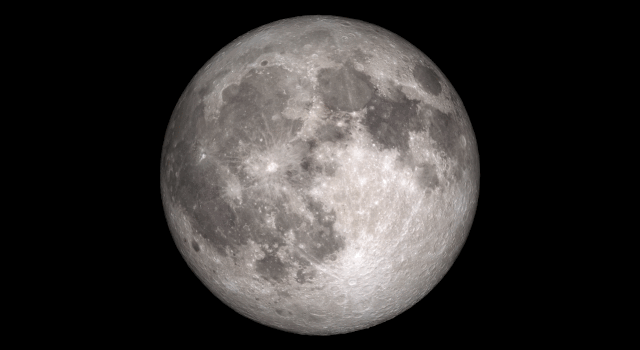 Teachable Moments
Teachable MomentsHow to Watch a Total Lunar Eclipse and Get Students Observing the Moon
There’s no better time to learn about the Moon than during a lunar eclipse. Here’s how eclipses work, what to expect, and how to get students engaged.
-
 Collection
CollectionMoon Lessons for Educators
Teach students about the Moon with this collection of standards-aligned activities inspired by real NASA missions and science.
-
 Collection
CollectionMoon Activities for Students
Learn all about the Moon with these projects, slideshows, and videos for students.
Artemis Takes a Giant Leap
NASA is making plans to send astronauts back to the Moon for the first time since 1972 – this time to establish a sustainable presence and prepare for future human missions to Mars. The first major step is Artemis I, which is testing three key components required to send astronauts beyond the Moon: the Orion spacecraft, the Space Launch System, or SLS, rocket and the ground systems at Kennedy Space Center in Florida. The uncrewed Artemis I mission marks the first test of all three components at once.
Get your K-12 students following along with lessons in rocketry and what it takes to live in space. Plus, register to follow along with the mission with resources and updates from NASA's Office of STEM Engagement.
Lessons & Resources:
-
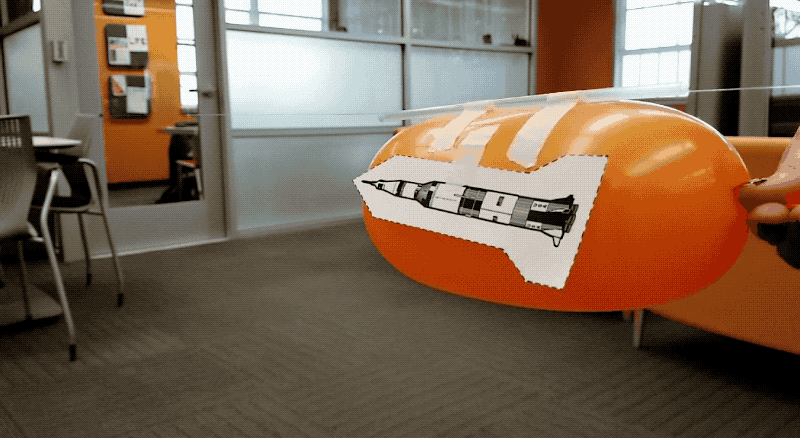 Collection
CollectionArtemis Lessons for Educators
Get students engaged in NASA's Artemis Program with STEM lessons all about the Moon, rockets, space habitats, and more
-
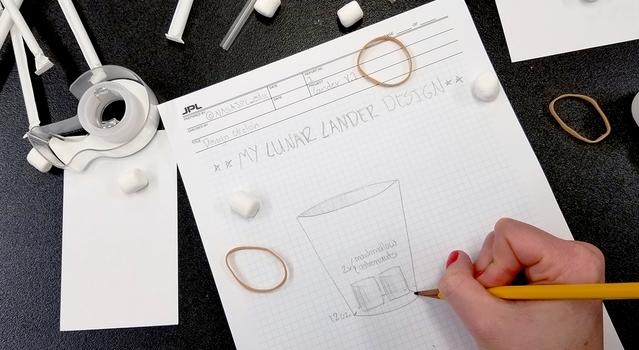 Collection
CollectionArtemis Activities for Students
These STEM projects and activities for students will get them exploring the Moon, rockets, space flight and other facets of NASA's Artemis Program.
-
 Public Event
Public EventJoin NASA Online for Artemis I
Register to receive updates and resources related to Artemis I – the first in a series of Artemis Program missions designed to establish a sustainable human presence on the Moon and prepare for future human missions to Mars.
-
 Educator Resources
Educator ResourcesArtemis Toolkit
Explore Artemis resources for educators and students from NASA's Office of STEM Engagement.
-
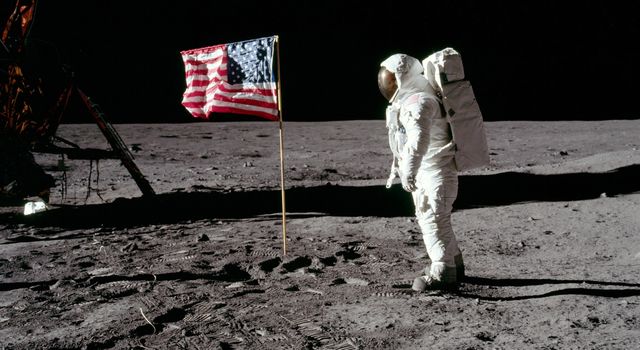 Teachable Moments
Teachable MomentsCelebrate the 50th Anniversary of NASA's Apollo Moon Landing
Explore the incredible history of the Apollo missions and find out what's in store for NASA's next mission to the Moon.
December
Satellite Launches on a Mission to Follow the Water
As crucial as water is to human life, did you know that no one has ever completed a global survey of Earth’s surface water? That is about to change with the launch of the SWOT mission. SWOT, which stands for Surface Water Ocean Topography, will use a state-of-the-art radar to measure the elevation of water in major lakes, rivers, wetlands, and reservoirs. It will also provide an unprecedented level of detail on the ocean surface. This data will help scientists track how these bodies of water are changing over time and improve weather and climate models.
Engage your students in learning about Earth’s water budget and how we monitor Earth from space with these lessons. And be sure to check out our Teachable Moments article for more about the SWOT mission and the science of our changing climate.
-
 Teachable Moments
Teachable MomentsNASA Mission Takes a Deep Dive Into Earth's Surface Water
Explore how and why the SWOT mission will take stock of Earth's water budget, what it could mean for assessing climate change, and how to bring it all to students.
-
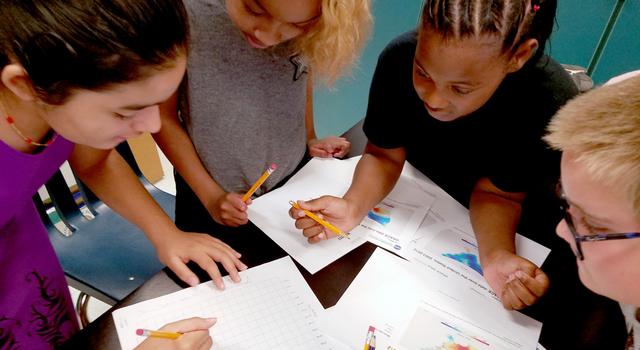 Collection
CollectionSWOT Lessons for Educators
Explore the science and engineering behind the SWOT mission with this collection of standards-aligned lessons all about water.
-
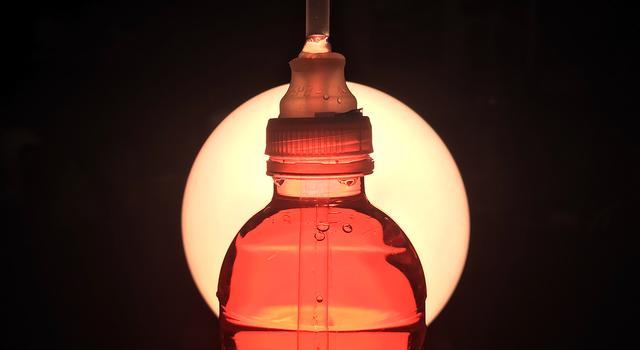 Collection
CollectionSWOT Actvities for Students
Explore projects, videos, slideshows, and games for students all about the water cycle and sea level rise.
Prepare for the Science Fair
Before you know it, it'll be science fair time. Avoid the stress of science fair prep by getting students organized and thinking about their projects before the winter recess. Start by watching our video series How to Do a Science Fair Project. A scientist and an engineer from JPL walk your students through all the steps they will need to create an original science fair project by observing the world around them and asking questions. You can also explore our science fair starter pack of lessons and projects to get students generating ideas and thinking like scientists and engineers.
Lessons & Resources:
-
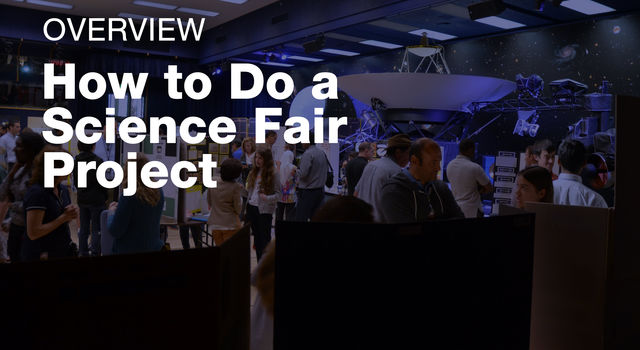 Video Series
Video SeriesHow to Do a Science Fair Project
Learn all the ins and outs of crafting your very own science fair project.
-
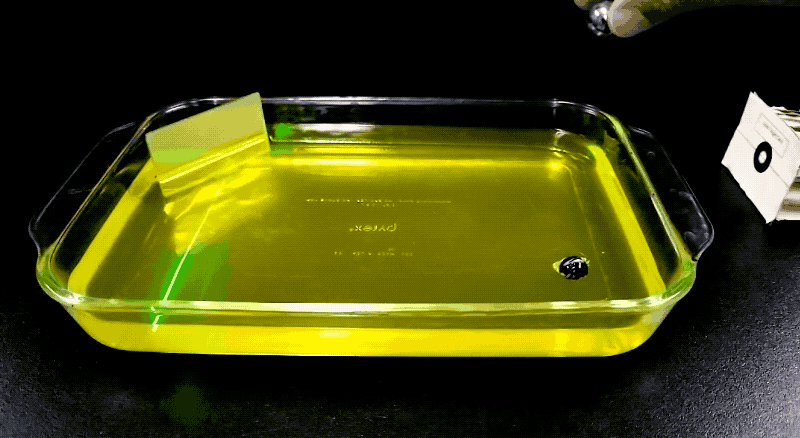 Collection
CollectionScience Fair Lessons for Educators
Teach students how to craft their own science and engineering fair project with these video tutorials and lessons featuring NASA missions and science.
-
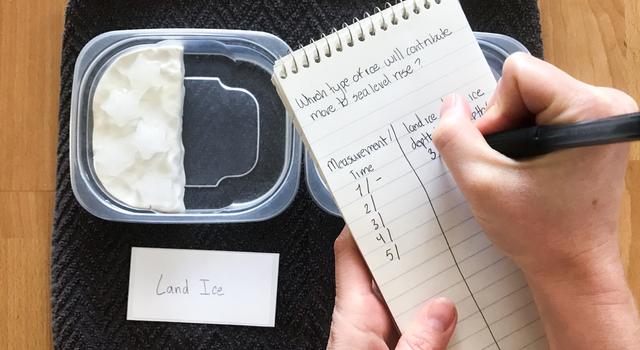 Collection
CollectionScience Fair Activities for Students
Learn how to design a science and engineering fair project and get inspired with our catalog of student projects featuring NASA missions and science.
January
Explore STEM Careers
January is the time when many of us set goals for the year ahead, so it's the perfect month to get students exploring their career goals and opportunities in STEM. Students can learn more about careers in STEM and hear directly from scientists and engineers working on NASA missions in our Teaching Space video series. Meanwhile, our news page has more on what it takes to be a NASA astronaut and what it's like to be a JPL intern.
For students already in college and pursuing STEM degrees, now is the time to start exploring internship opportunities for the summer. The deadline for JPL summer internships is in March, so it's a good idea to refresh your resume and get your application started now. Learn how to stand out with this article on how to get an internship at JPL – which also includes advice for pre-college students.
Resources:
-
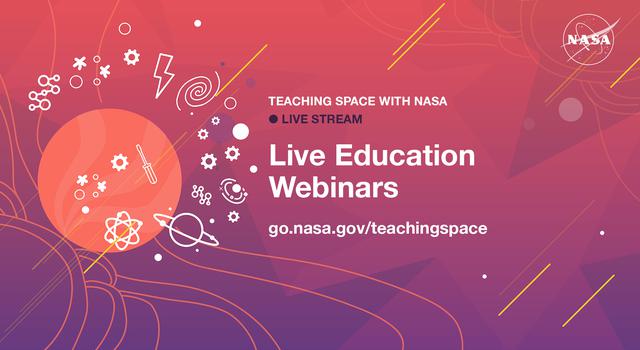 Expert Talks
Expert TalksTeaching Space With NASA
Hear from experts and education specialists about the latest missions and science happening at NASA and get your questions answered.
-
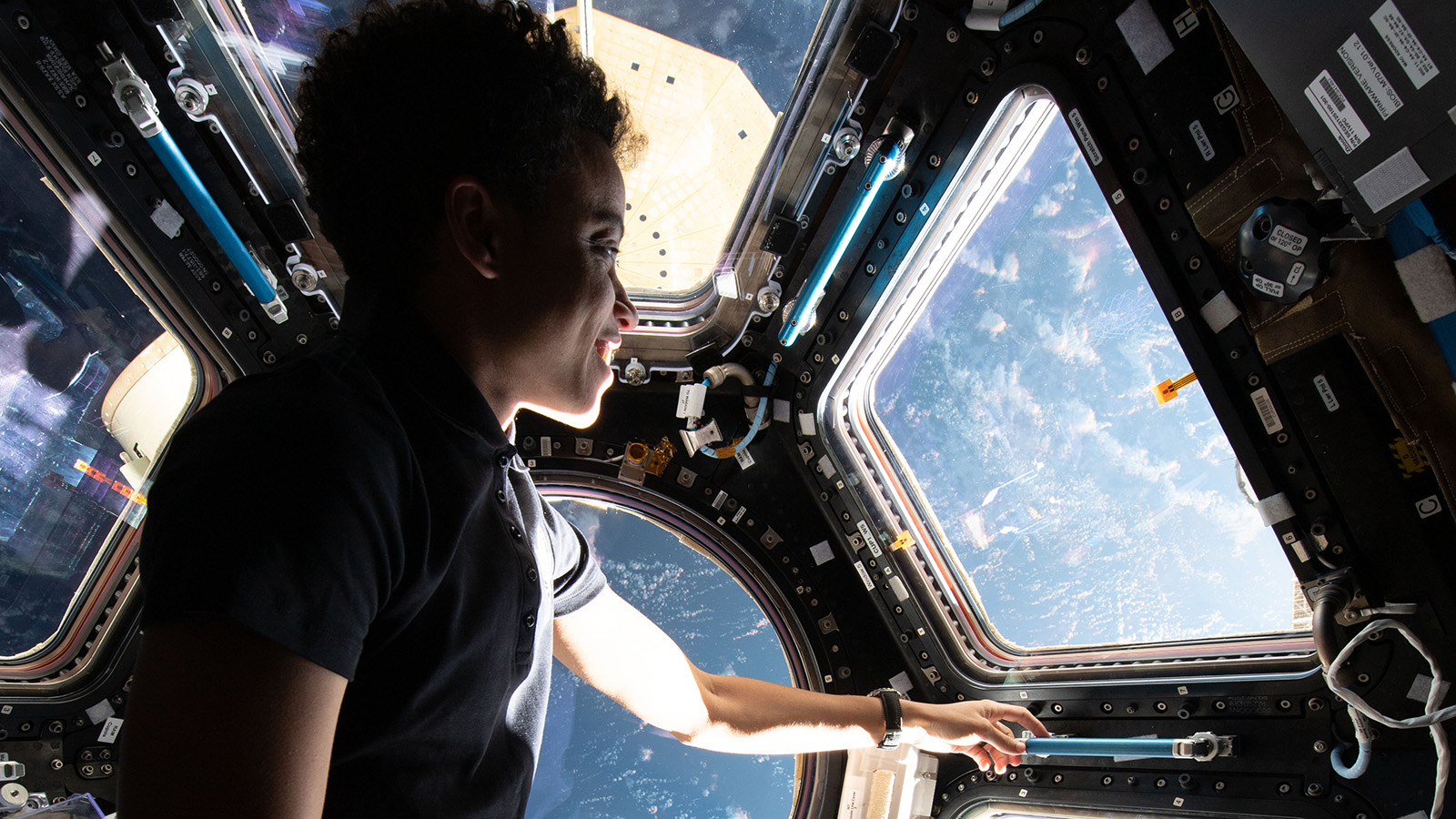 Articles
ArticlesCareer Guidance
Get advice from scientists, engineers and educators about what it takes to work in science, technology, engineering and mathematics fields and how to get a foot in the door.
-
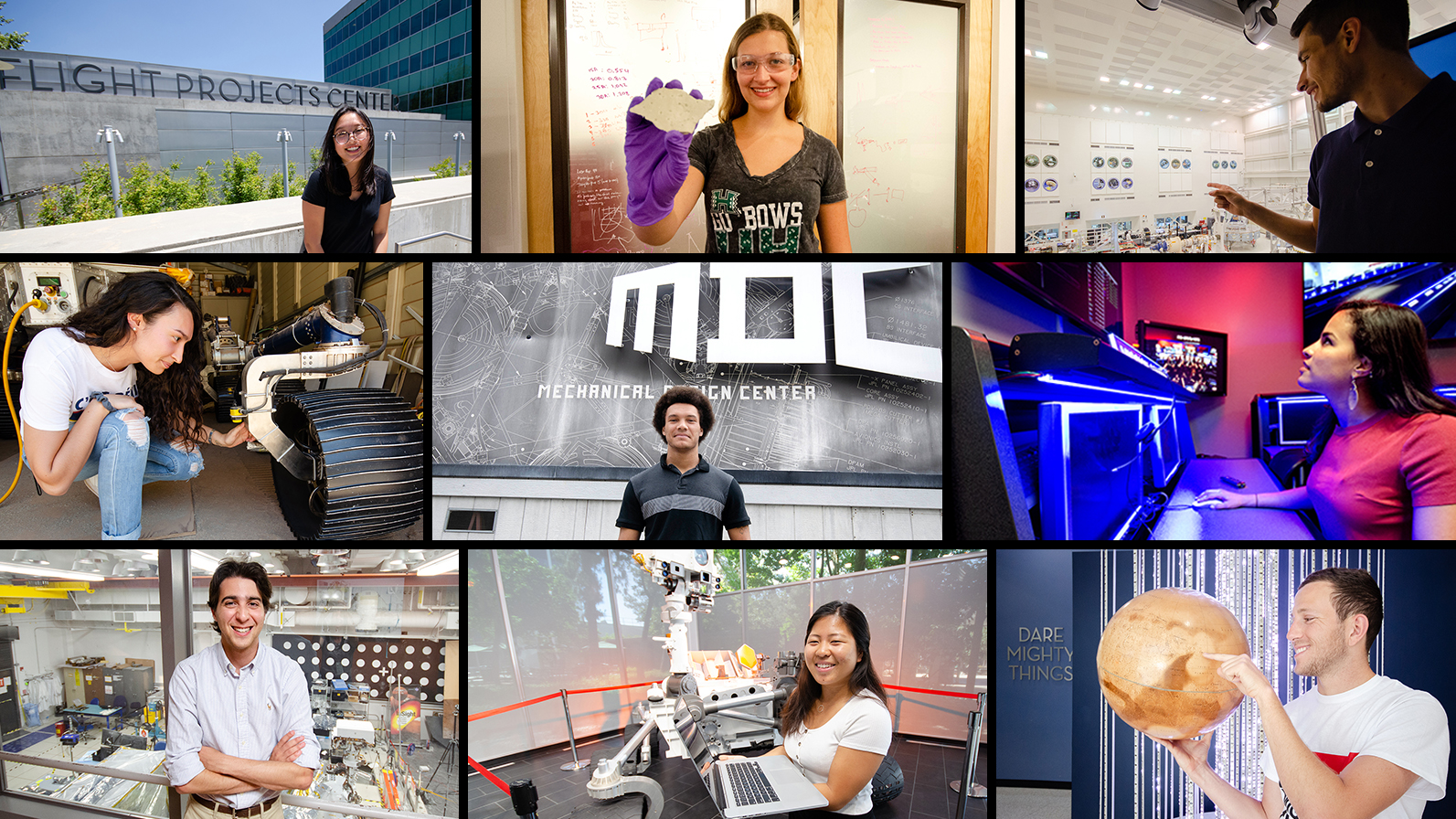 Articles
ArticlesMeet JPL Interns
These interns are pushing the boundaries of space exploration and science at the leading center for robotic exploration of the solar system.
-
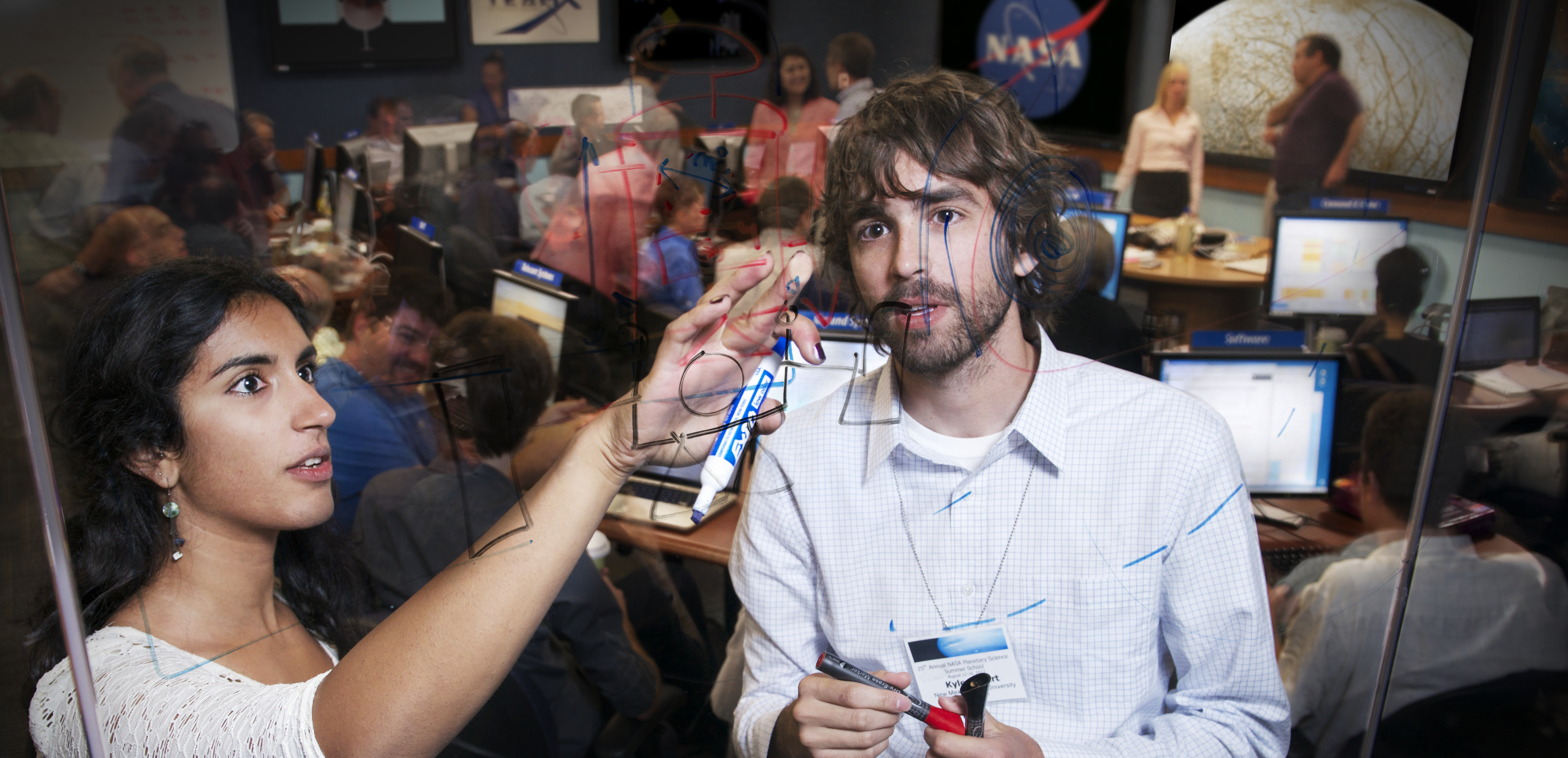 Opportunities
OpportunitiesJPL Internships and Fellowships
Discover exciting internships and research opportunities at the leading center for robotic exploration of the solar system.
-
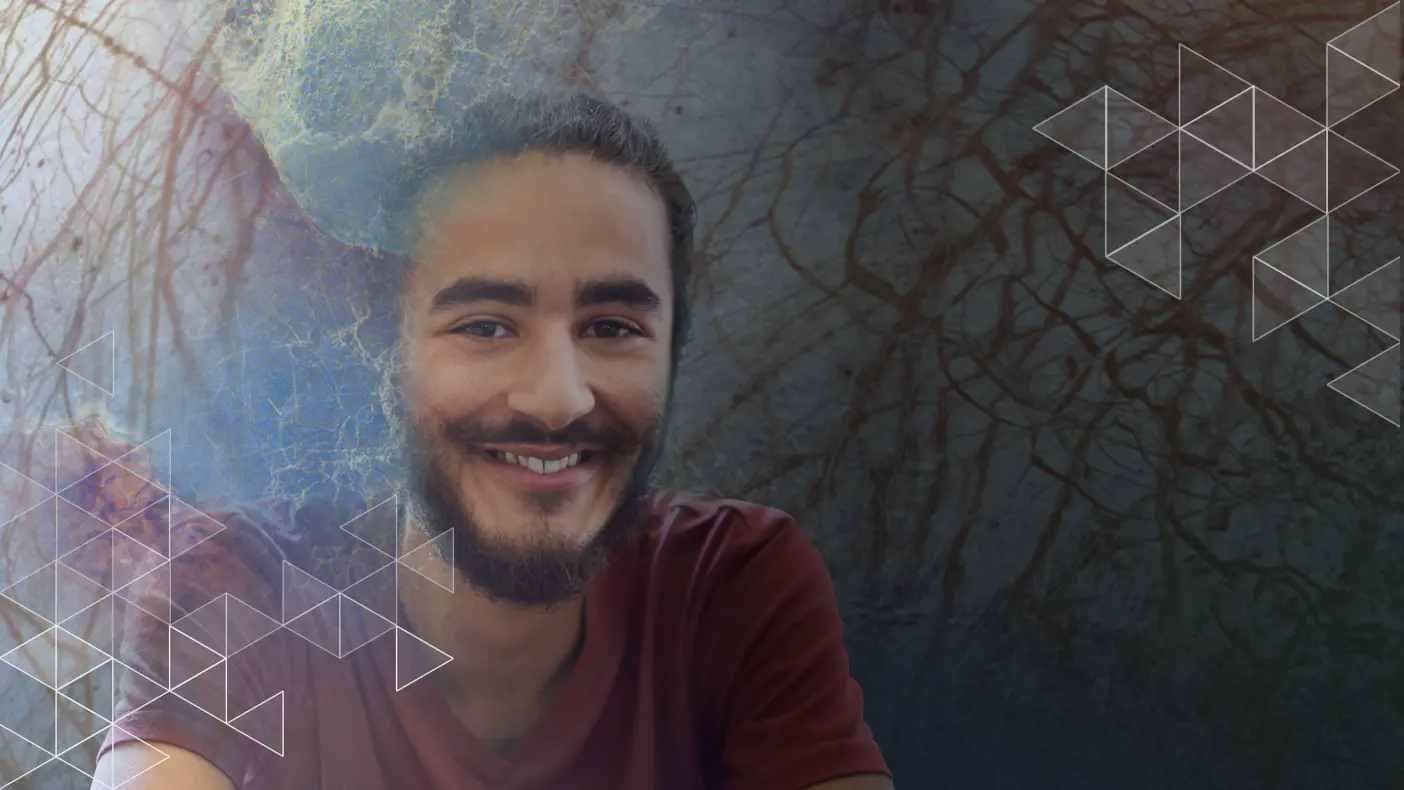 Opportunities
OpportunitiesJPL Jobs: Opportunities for Students
Start here to learn more about internship, fellowship, and postdoc opportunities at JPL and how to apply.
-
 Opportunities
OpportunitiesNASA Internships
Learn about internship opportunities at NASA centers across the U.S., and apply today!
February
Mars Rover Celebrates 2-Year 'Landiversary'
NASA's Perseverance Mars rover celebrates its "landiversary" on February 18, which marks two years since the rover made its nail-biting descent on the Red Planet. The rover continues to explore Jezero Crater using science tools to analyze rocks and soil in search of signs of ancient microbial life. As of this writing, the rover has collected twelve rock core samples that will be sent to Earth by a future mission. Perseverance even witnessed a solar eclipse! Meanwhile, the Ingenuity Mars helicopter, which the rover deployed shortly after landing, has gone on to achieve feats of its own.
The Mission to Mars Student Challenge is a great way to get students of all ages exploring STEM and the Red Planet right along with the Perseverance rover. The challenge includes seven weeks of education content that can be customized for your classroom as well as education plans, expert talks, and resources from NASA.
Lessons & Resources:
-
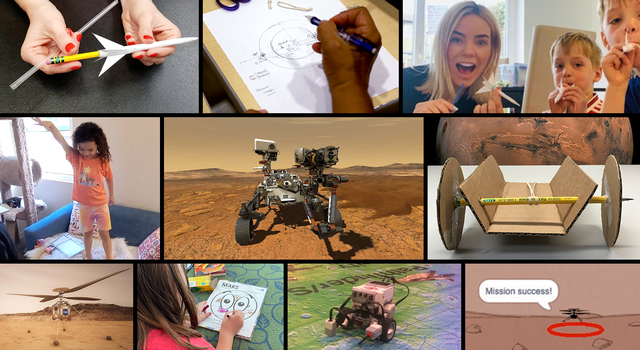 Collection
CollectionMission to Mars Student Challenge
Get K-12 students exploring Mars with NASA scientists, engineers, and the Perseverance rover as they learn all about STEM and design their very own mission to the Red Planet!
-
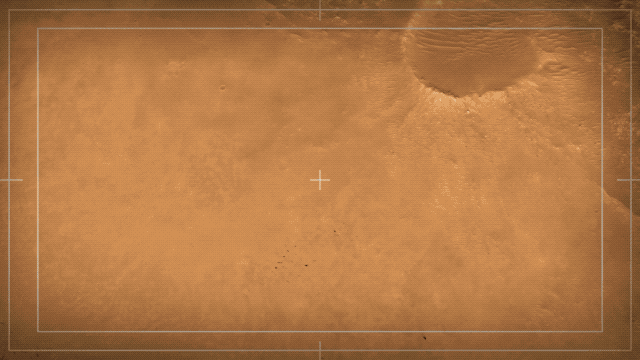 Teachable Moments
Teachable MomentsNASA's Perseverance Rover Lands on Mars
Learn how, why, and what Perseverance will explore on Mars, plus find out about an exciting opportunity for you and your students to join in the adventure!
March
Take On the Pi Day Challenge
Math teachers, pie-lovers, and pun-aficionados rejoice! March 14 is Pi Day, the annual celebration of the mathematical constant used throughout the STEM world – and especially for space exploration. This year's celebration brings the 10th installment of the NASA Pi Day Challenge, featuring four new illustrated math problems involving pi along with NASA missions and science.
Explore the full collection of pi math lessons, get students learning about how we use pi at NASA, and hear from a JPL engineer on how many decimals of pi we use for space exploration at the links below.
Lessons & Resources:
-
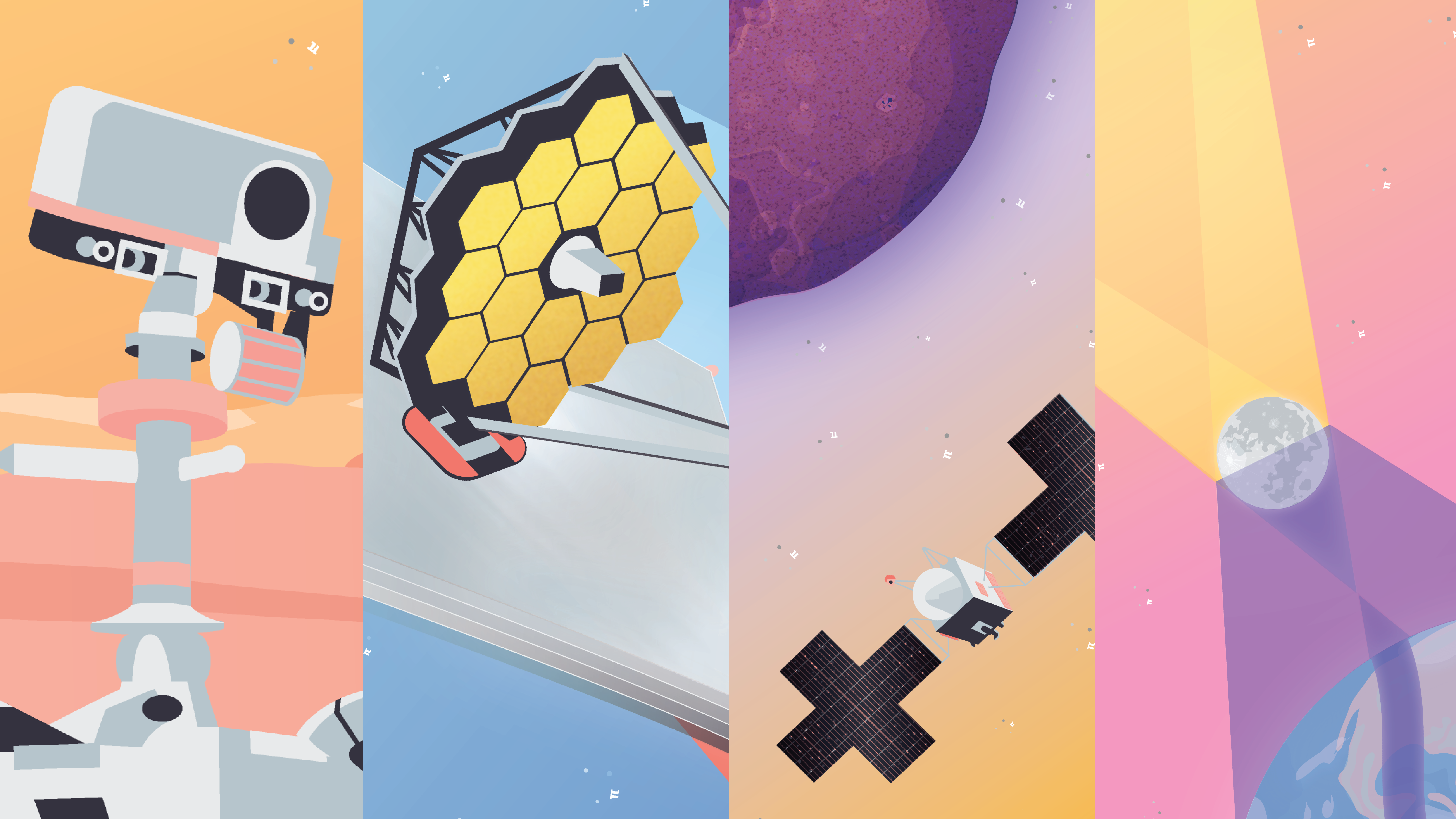 Teachable Moments
Teachable Moments10 Years of NASA's Pi Day Challenge
Learn more about pi, the history of Pi Day before, and the science behind the 2023 NASA Pi Day Challenge.
-
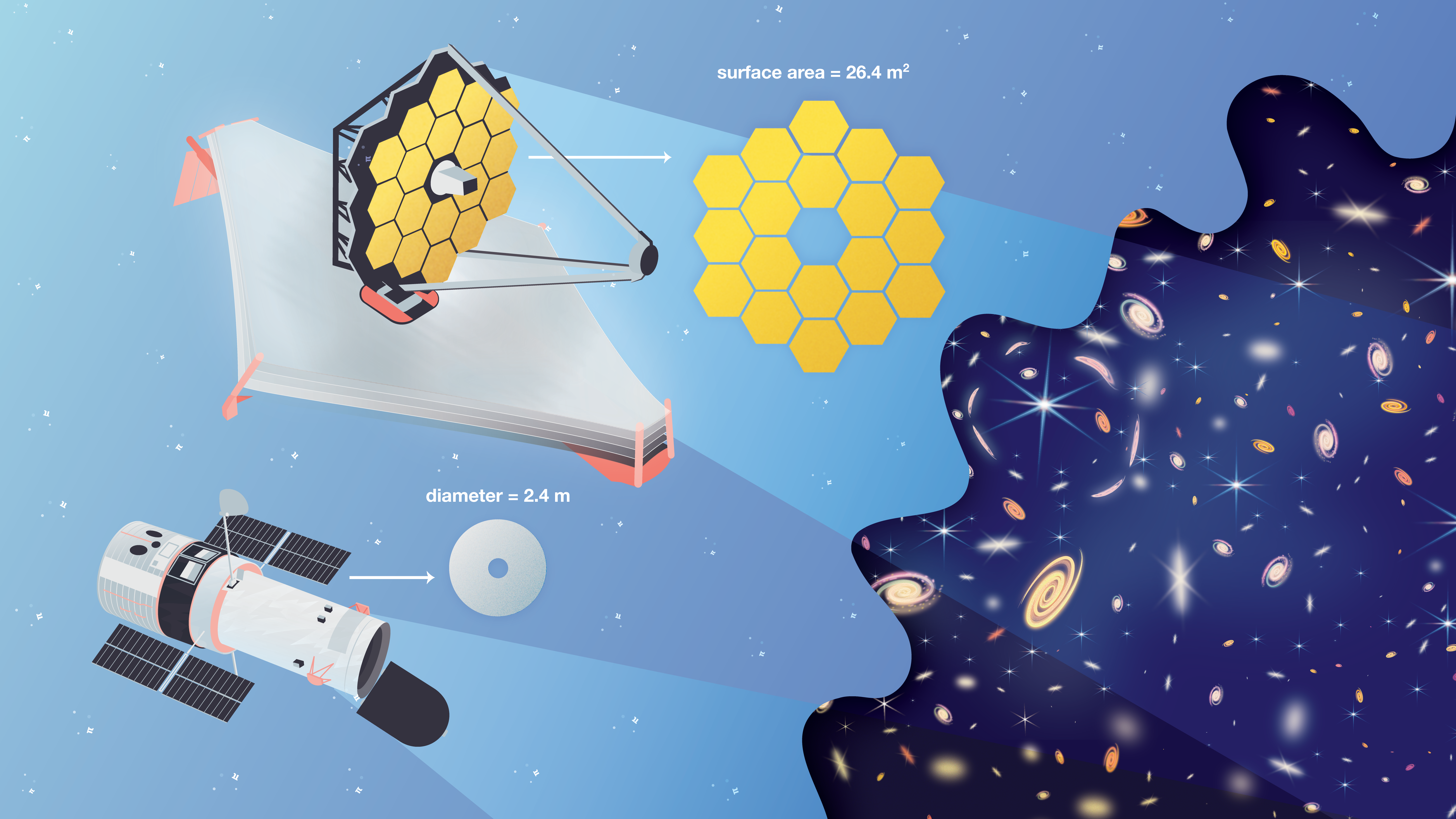 Collection
CollectionPi in the Sky Lessons
Find everything you need to bring the NASA Pi Day Challenge into the classroom, including printable handouts of each illustrated math problem.
-
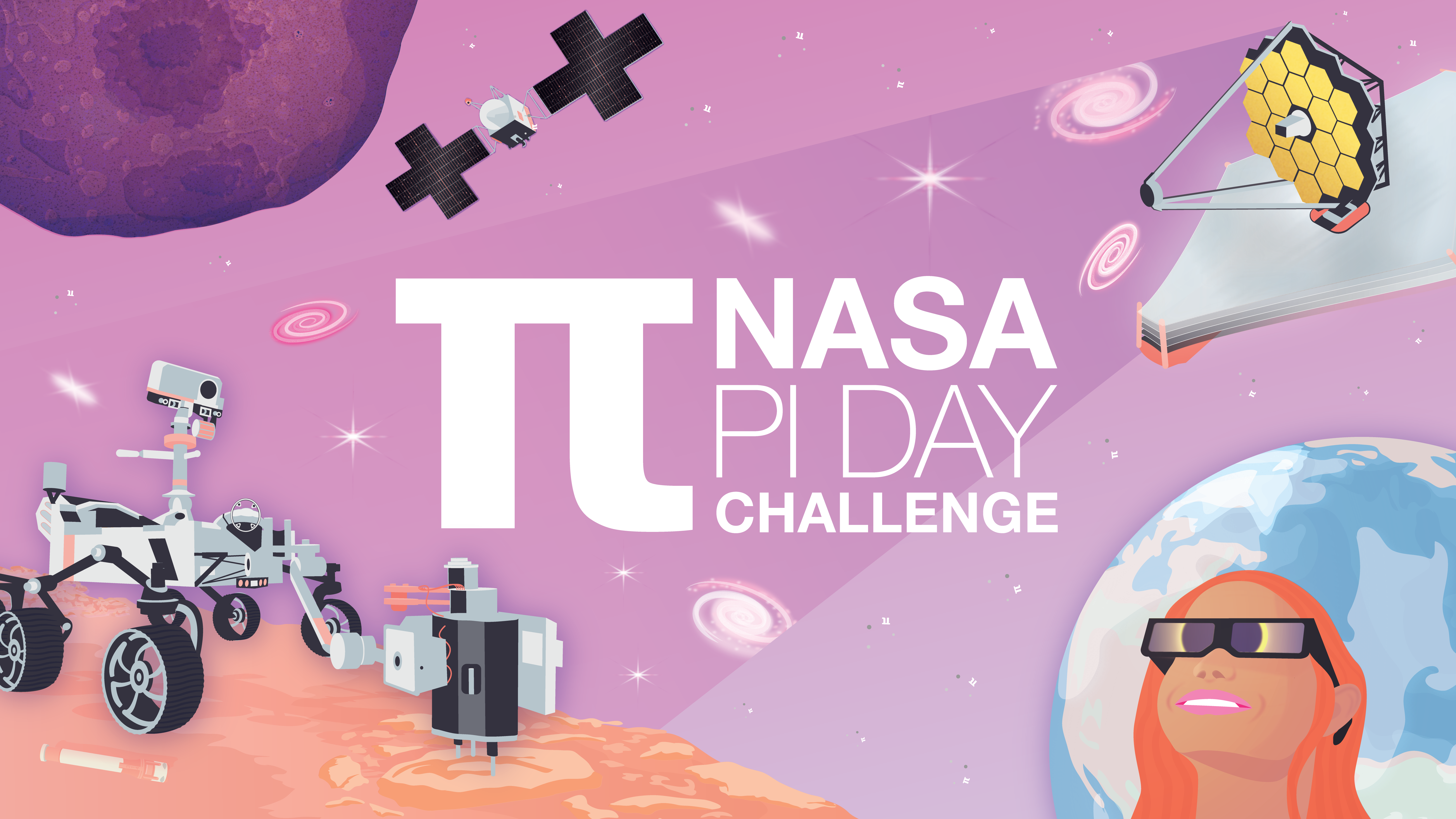 Student Project
Student ProjectNASA Pi Day Challenge
This collection of illustrated math problems gets students using pi like NASA scientists and engineers exploring Earth and space.
-
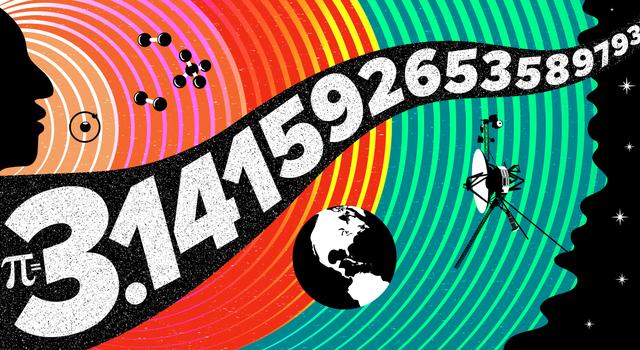 Article
ArticleHow Many Decimals of Pi Do We Really Need?
While you may have memorized more than 70,000 digits of pi, world record holders, a JPL engineer explains why you really only need a tiny fraction of that for most calculations.
-
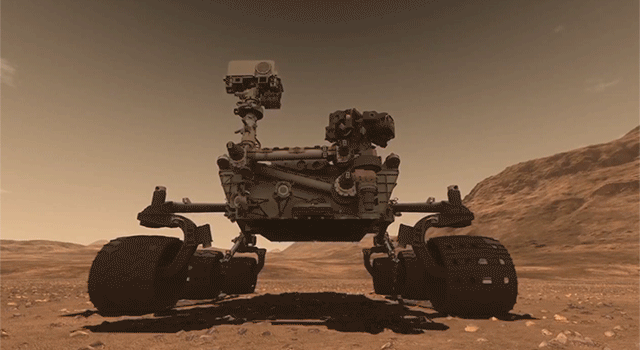 Article
Article18 Ways NASA Uses Pi
Whether it's sending spacecraft to other planets, driving rovers on Mars, finding out what planets are made of or how deep alien oceans are, pi takes us far at NASA. Find out how pi helps us explore space.
April
Celebrate Earth Day With NASA
You may not immediately think of Earth science when you think of NASA, but it's a big part of what we do. Earth Day on April 22 is a great time to explore Earth science with NASA, especially as new missions are taking to the skies to study the movements of dust, measure surface water across the planet, and track tiny land movements to better predict natural disasters.
Whether you want to focus on Earth’s surface and geology, climate change, extreme weather, or the water budget, we have an abundance of lessons, student projects and Teachable Moments to guide your way.
Lessons & Resources:
-
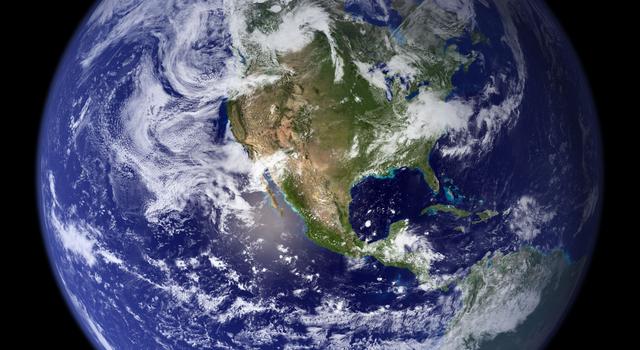 Collection
CollectionEarth Lessons for Educators
Discover a collection of standards-aligned STEM lessons all about Earth and climate change.
-
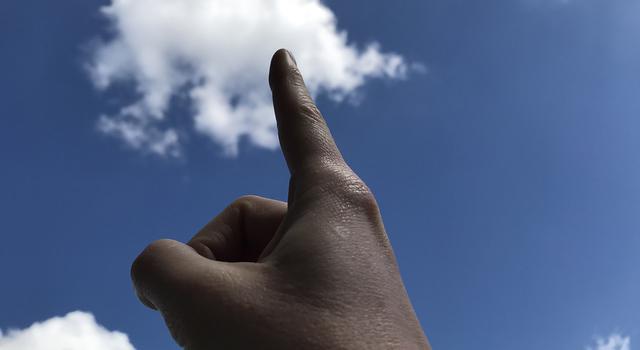 Collection
CollectionEarth Activities for Students
Try these science and engineering projects, watch videos, and explore images all about the planet that we call home.
-
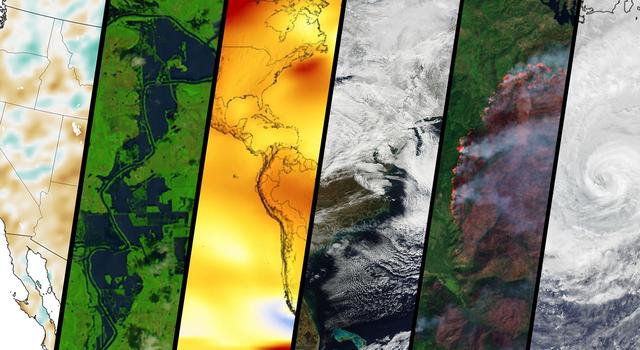 Teachable Moments
Teachable MomentsClimate Change Collection
Explore this collection of Teachable Moments articles to get a primer on the latest NASA Earth science missions, plus find related education resources you can deploy right away!
May
Summer Learning Adventures
As the school year comes to a close, send your students off on an adventure of summer learning with our do-it-yourself STEM projects. Additionally, our Learning Space With NASA at Home page and video series is a great resource for parents and families to help direct students' learning during out-of-school time.
Lessons & Resources:
-
 Student Resources
Student ResourcesSummer Activities for Students
Explore Earth and space with these hands-on projects, slideshows, videos, and more for K-12 students.
-
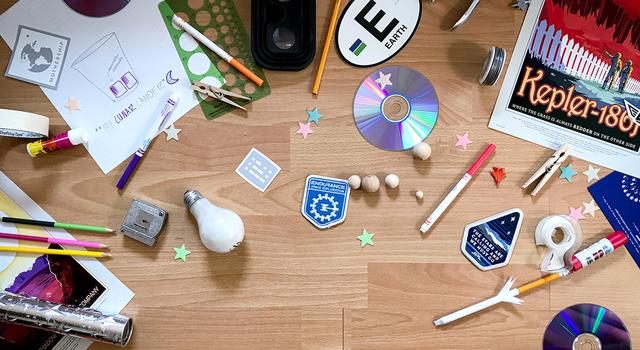 Student Resources
Student ResourcesLearning Space With NASA
Explore space and science activities you can do with NASA at home. Find video tutorials, DIY projects, slideshows, games and more!
TAGS: K-12 Education, Teachers, Students, Lessons, Resources, Projects, Events, Artemis, Voyager, DART, Asteroids, Europa, Ocean Worlds, Halloween, History, Earth, Climate, SWOT, Lunar Eclipse, Science Fair, Career Advice, Mars, Perseverance, Pi Day, Earth Day, Summer STEM
Teachable Moments | January 11, 2019
How to Watch the Only Total Lunar Eclipse of 2019, Plus a Supermoon
In the News
Looking up at the Moon can create a sense of awe at any time, but those who do so on the evening of January 20 will be treated to the only total lunar eclipse of 2019. Visible for its entirety in North and South America, this eclipse is being referred to by some as a super blood moon – “super” because the Moon will be closest to Earth in its orbit during the full moon (more on supermoons here) and “blood" because the total lunar eclipse will turn the Moon a reddish hue (more on that below). This is a great opportunity for students to observe the Moon – and for teachers to make connections to in-class science content.
How It Works
Eclipses can occur when the Sun, the Moon and Earth align. Lunar eclipses can happen only during a full moon, when the Moon and the Sun are on opposite sides of Earth. At that point, the Moon can move into the shadow cast by Earth, resulting in a lunar eclipse. However, most of the time, the Moon’s slightly tilted orbit brings it above or below Earth’s shadow.
The time period when the Moon, Earth and the Sun are lined up and on the same plane – allowing for the Moon to pass through Earth’s shadow – is called an eclipse season. Eclipse seasons last about 34 days and occur just shy of every six months. When a full moon occurs during an eclipse season, the Moon travels through Earth’s shadow, creating a lunar eclipse.

When a full moon occurs during an eclipse season, the Moon travels through Earth's shadow, creating a lunar eclipse. Credit: NASA/JPL-Caltech | + Enlarge image
Unlike solar eclipses, which require special glasses to view and can be seen only for a few short minutes in a very limited area, a total lunar eclipse can be seen for about an hour by anyone on the nighttime side of Earth – as long as skies are clear.
What to Expect
The Moon passes through two distinct parts of Earth’s shadow during a lunar eclipse. The outer part of the cone-shaped shadow is called the penumbra. The penumbra is less dark than the inner part of the shadow because it’s penetrated by some sunlight. (You have probably noticed that some shadows on the ground are darker than others, depending on how much outside light enters the shadow; the same is true for the outer part of Earth’s shadow.) The inner part of the shadow, known as the umbra, is much darker because Earth blocks additional sunlight from entering the umbra.
At 6:36 p.m. PST (9:36 p.m. EST) on January 20, the edge of the Moon will begin entering the penumbra. The Moon will dim very slightly for the next 57 minutes as it moves deeper into the penumbra. Because this part of Earth’s shadow is not fully dark, you may notice only some dim shading (if anything at all) on the Moon near the end of this part of the eclipse.

During a total lunar eclipse, the Moon first enters into the penumbra, or the outer part of Earth's shadow, where the shadow is still penetrated by some sunlight. Credit: NASA | + Enlarge image
At 7:33 p.m. PST (10:33 p.m. EST), the edge of the Moon will begin entering the umbra. As the Moon moves into the darker shadow, significant darkening of the Moon will be noticeable. Some say that during this part of the eclipse, the Moon looks as if it has had a bite taken out of it. That “bite” gets bigger and bigger as the Moon moves deeper into the shadow.

As the Moon starts to enter into the umbra, the inner and darker part of Earth's shadow, it appears as if a bite has been taken out of the Moon. This "bite" will grow until the Moon has entered fully into the umbra. Credit: NASA | + Enlarge image
At 8:41 p.m. PST (11:41 p.m. EST), the Moon will be completely inside the umbra, marking the beginning of the total lunar eclipse. The moment of greatest eclipse, when the Moon is halfway through the umbra, occurs at 9:12 p.m. PST (12:12 a.m. EST).

The total lunar eclipse starts once the moon is completely inside the umbra. And the moment of greatest eclipse happens with the Moon is halfway through the umbra as shown in this graphic. Credit: NASA | + Enlarge image
As the Moon moves completely into the umbra, something interesting happens: The Moon begins to turn reddish-orange. The reason for this phenomenon? Earth’s atmosphere. As sunlight passes through it, the small molecules that make up our atmosphere scatter blue light, which is why the sky appears blue. This leaves behind mostly red light that bends, or refracts, into Earth’s shadow. We can see the red light during an eclipse as it falls onto the Moon in Earth’s shadow. This same effect is what gives sunrises and sunsets a reddish-orange color.

As the Moon moves completely into the umbra, it turns a reddish-orange color. Credit: NASA | + Enlarge image
A variety of factors affect the appearance of the Moon during a total lunar eclipse. Clouds, dust, ash, photochemical droplets and organic material in the atmosphere can change how much light is refracted into the umbra. Additionally, the January 2019 lunar eclipse takes place when the full moon is at or near the closest point in its orbit to Earth – a time popularly known as a supermoon. This means the Moon is deeper inside the umbra shadow and therefore may appear darker. The potential for variation provides a great opportunity for students to observe and classify the lunar eclipse based on its brightness. Details can be found in the “Teach It” section below.
At 9:43 p.m. PST (12:43 a.m. EST), the edge of the Moon will begin exiting the umbra and moving into the opposite side of the penumbra. This marks the end of the total lunar eclipse.
At 10:50 p.m. PST (1:50 a.m. EST), the Moon will be completely outside the umbra. It will continue moving out of the penumbra until the eclipse ends at 11:48 p.m (2:48 a.m. EST).
What if it’s cloudy where you live? Winter eclipses always bring with them the risk of poor viewing conditions. If your view of the Moon is obscured by the weather, explore options for watching the eclipse online, such as the Time and Date live stream.
Why It’s Important
Lunar eclipses have long played an important role in understanding Earth and its motions in space.
In ancient Greece, Aristotle noted that the shadows on the Moon during lunar eclipses were round, regardless of where an observer saw them. He realized that only if Earth were a spheroid would its shadows be round – a revelation that he and others had many centuries before the first ships sailed around the world.
Earth wobbles on its axis like a spinning top that’s about to fall over, a phenomenon called precession. Earth completes one wobble, or precession cycle, over the course of 26,000 years. Greek astronomer Hipparchus made this discovery by comparing the position of stars relative to the Sun during a lunar eclipse to those recorded hundreds of years earlier. A lunar eclipse allowed him to see the stars and know exactly where the Sun was for comparison – directly opposite the Moon. If Earth didn’t wobble, the stars would appear to be in the same place they were hundreds of years earlier. When Hipparchus saw that the stars’ positions had indeed moved, he knew that Earth must wobble on its axis!
Lunar eclipses are also used for modern-day science investigations. Astronomers have used ancient eclipse records and compared them with computer simulations. These comparisons helped scientists determine the rate at which Earth’s rotation is slowing.
Teach It
Ask students to observe the lunar eclipse and evaluate the Moon’s brightness using the Danjon Scale of Lunar Eclipse Brightness. The Danjon scale illustrates the range of colors and brightness the Moon can take on during a total lunar eclipse, and it’s a tool observers can use to characterize the appearance of an eclipse. View the lesson guide below. After the eclipse, have students compare and justify their evaluations of the eclipse.
-

Evaluating a Lunar Eclipse
Students use the Danjon Scale of Lunar Eclipse Brightness to illustrate the range of colors and brightness the Moon can take on during a total lunar eclipse.
Grades 3-12
Time 30 mins - 1 hr
Use these standards-aligned lessons and related activities to get your students excited about the eclipse, Moon phases and Moon observations:
-

Observing the Moon
Students identify the Moon’s location in the sky and record their observations over the course of the moon-phase cycle in a journal.
Grades K-6
Time 30 mins - 1 hr
-

Moon Phases
Students learn about the phases of the moon by acting them out.
Grades 1-6
Time 30 mins - 1 hr
-

Whip Up a Moon-Like Crater
Whip up a moon-like crater with baking ingredients as a demonstration for students.
Grades 1-6
Time 30 mins - 1 hr
-
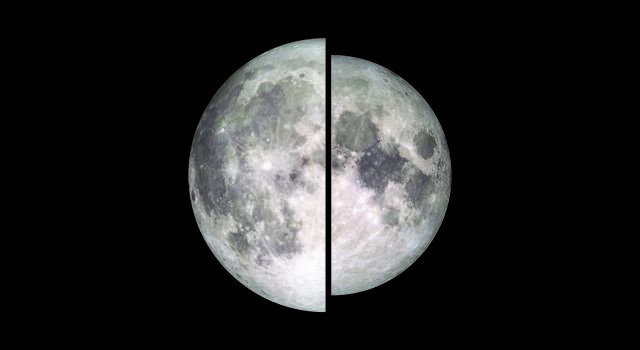
Teachable Moment: What’s a Supermoon and Just How Super Is It?
Are supermoons as super as they're made out to be? Learn what causes them and explore related activities for teachers and students.
-
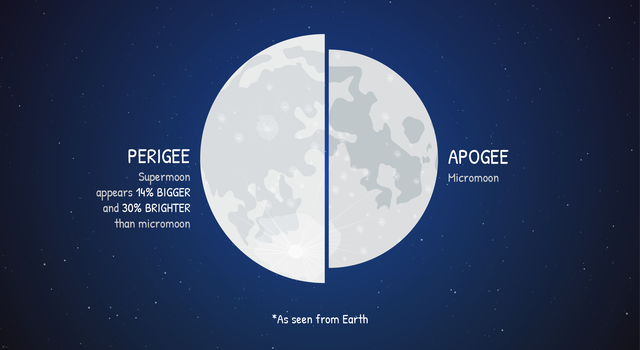
Measuring the Supermoon
Students use analog and digital tools to measure the Moon’s apparent size and brightness.
Grades 5-12
Time 30 mins - 1 hr
-

Modeling the Earth-Moon System
Students learn about scale models and distance by creating a classroom-size Earth-Moon system.
Grades 6-8
Time 30 mins - 1 hr
-

Make a Moon Phases Calendar and Calculator
Like a decoder wheel for the Moon, this calendar will show you where and when to see the Moon and every moon phase throughout the year!
- Try these related resources for students from NASA’s Space Place:
- Lunar Eclipses and Solar Eclipses – This guide for kids provides an overview of lunar and solar eclipses.
- Why Does the Moon Have Craters? – Check out NASA’s Space Place for the answer, written just for kids.
- NASA Moon Website – Find out more about the Moon along with the NASA robots and humans who have visited it.
Explore More
TAGS: Lunar Eclipse, Moon, Teachers, Educators, K-12 Education, Astronomy




